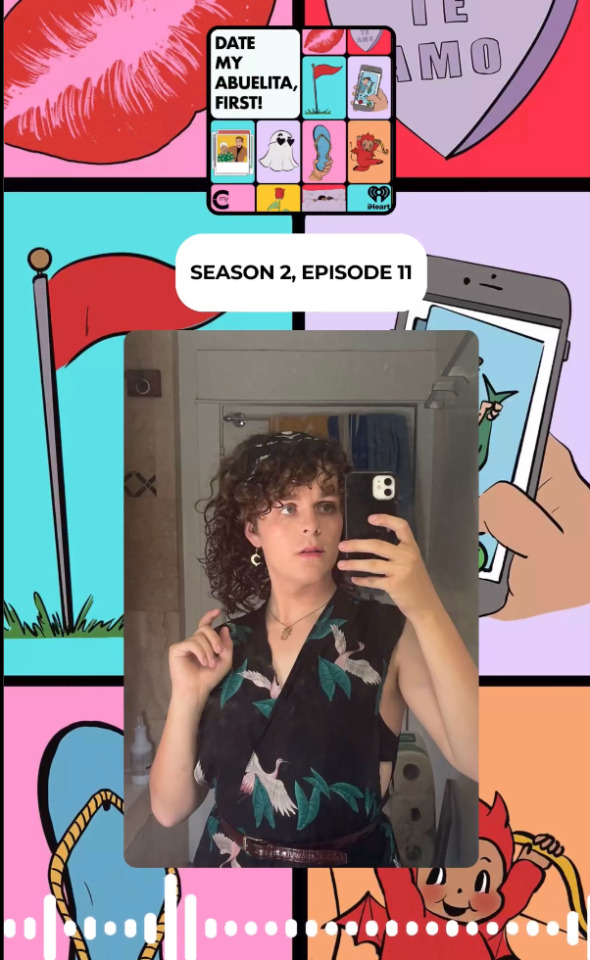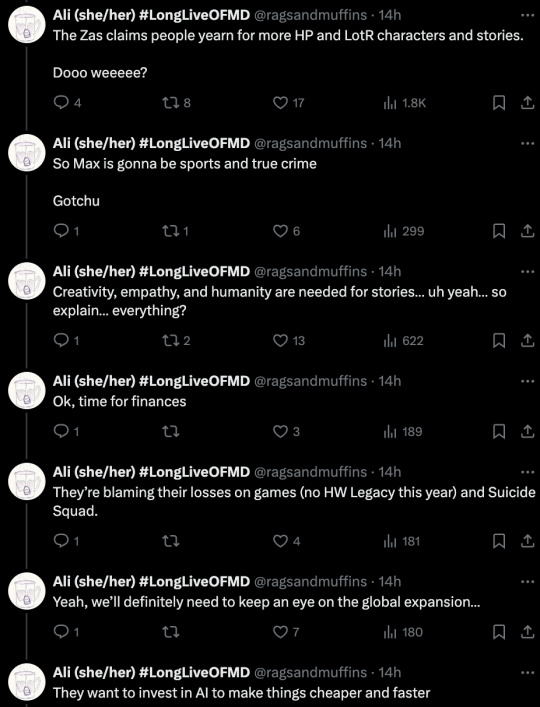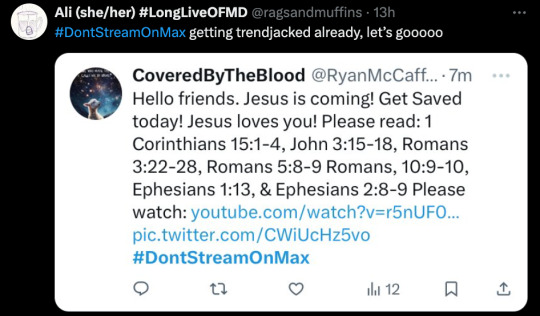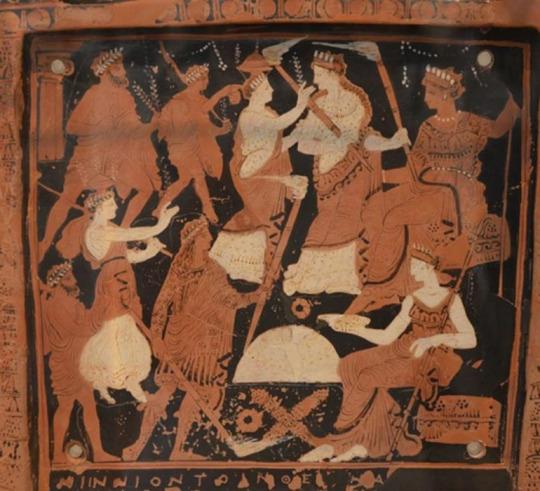#online sales are not for me chief
Text
why does selling art involve so many steps when all i wanna do is make and share pretty pictures 😭
#currently working out taxes and banking and a website and it's all so much#also not sure whether i should revitalize my art blog here?? i havent touched it in years and tbh idk how well it would go since most of my-#-work is original and not fan art#plus building a following is hard and i am not interested in killing myself over algorithms so like#online sales are not for me chief#like i'll have an online shop available but it's not gonna be my focal point#ugh i just wanna go paint
2 notes
·
View notes
Text
https://onlinemedicalmarijuanastore.com/

buy cbd oil online, where to buy edibles online, buy marijuana online,legit marijuana stores,discrete home delivery worldwide
we offer the best top quality medical marijuana, cbd oil, edibles, weed seeds and lots more..... Our delivery is discrete with a tracking number through the best couriers worldwide. Our packages are triple or vacuum sealed on all orders which cannot be traced or detected by canine dogs or electronic sniffers. we equally got a variety of payment methods to suit all our clients and are very much secured worldwide.
Are you suffering from chronic pain, diabetes, asthma, arthritis, crohns disease, epilepsy, cancer,glaucoma, spasms, and lots more other conditions....... then worry no more cos your solution lies with us. All our products are lab tested and very medical for both humans and pets.
#medical dispensary#moca dispensary menu#cookies carts alpine vape oil dispensable stiizy granddaddy purp acapulco gold afghani kush ak 47 big chief extracts black domina black mari#legit online dispensary shipping usa#dispensary near me#de beque dispensary co#illinois dispensary#recreational dispensary#marijuana dispensary#dispensary dc#dispensary#buy cbd oil#buy cannabis in vancouver#buy whiskey online#buy roxycodone 30mg online#buy ivermectin sale#buy psychedelic online#buy promethazine w codeine syrup online#buy kush online#buy legal marijuana online#buy percocet online
1 note
·
View note
Text
IDW SONIC READERS, PLEASE READ THIS!!!!
I am begging you. On my hands and knees. Begging. More so than anything else I’ve asked of this fandom.
Please please buy the Fang miniseries when it comes out

Don’t just read it. Buy it. I will admit that I’m very guilty of reading through a lot of IDW Sonic through…less than legal means, and I know I’m not alone in that regard. But I think it’s really important that for this miniseries in particular, you actually go out and buy the damn thing. Show your support with your dollar.
Really think about it for a second—they gave Fang his own miniseries. Fang! An underutilized, underrated fan favorite for sure, but hardly a mainstay of the series. I’m sure that this was at least somewhat prompted by Superstars, where Fang is a major antagonist…but Bean and Bark weren’t in that game, and it already received its own online promo comic prior to the game’s release (notably, with Fang as the star).
Classic Sonic stories have also exclusively been relegated to one-shots in IDW, not a full on miniseries like what Fang is getting. Basically all of the IDW Sonic miniseries we’ve gotten so far have been plot relevant side stories to the main IDW comic that focus on side characters with little to no involvement from Sonic himself. Tangle and Whisper, Bad Guys, Impostor Syndrome…the only odd man out besides this Fang miniseries is Scrapnik Island.
Really think about it for a second. FANG is getting his own focus comic BEFORE KNUCKLES.
And that’s why it’s so important that we buy it.
I think Sega is using this comic to test the waters to see if people like Fang and want to see him in more future projects—be it comics, games, or even cartoons. But there’s more to it than just that.
See, Superstars hasn’t been doing that great. I know I said in an earlier post that people seemed to like it, but I retract that statement. It was damned by faint praise at launch, and now most of the discussion I’ve seen surrounding the game revolves around its flaws (chief among them being the middling OST and that the Steam version stealth installs an Epic Games service along with the game). No sales numbers have been projected as of writing, but it’s definitely been beaten out by Mario Wonder and Spider-Man 2.
So, Classic Sonic games aren’t doing too hot right now (I’m sure that many modern fans are jumping for joy at the prospect). But the classic characters are.
People really like the extended classic Sonic cast, just as much as they love the extended modern cast. From my experience, the two fan favorites are Mighty and Fang. Fang stands out to me in particular for a couple reasons: people were really upset that Sega specifically said no to Fang, Bark and Bean coming back after Ian snuck in a reference to them in IDW Sonic #3 (using their old team name from Archie, the Hooligans), and the fanmade 16-bit remake of Triple Trouble, Fang’s debut game, received private praise from many members of Sega and Sonic Team. People like Fang and the media he’s in, and Sega is starting to take notice. That’s why we’re getting this miniseries.
That’s why it’s so important that the miniseries sells well. If the big boys at Sega and Sonic Team see Superstars’ iffy reception but see Fang’s comic sell above expectations, then Sega will want to continue to use Fang (and potentially other “classic” Sonic characters as well) in more narrative driven projects. That means modern Sonic.
“But Sega won’t let any classic Sonic character into a modern Sonic project!” I hear you thinking. And to that I say, so? Sega changes its mind all the time. Remember that whole two worlds nonsense? That was thrown out with in Tailstube. Characters debuting in Boom and the comics were previously barred from the mainline games, but they’ve broken that “rule” in both Speed Battle and Frontiers. Hell, they’ve even been talked out of some of their sillier comic mandates, like characters not being able to wear different clothing.
For all their flaws, Sega does listen, and money speaks louder than anything. If this miniseries fails, Sega will just assume that people aren’t hot on Fang or the extended classic cast anymore and throw them back in the bar. But if the comic sells well, then Sega might take it as a sign that, hey, people like this character (and his two lackeys), we should put him in projects that fans are more interested in. Mighty and Ray probably wouldn’t be too far behind, especially given Mania’s success. Whether that means comics or games, modern or classic, who knows. What’s important is that it sends the right message to Sega, and they will listen to their consumers. That means us. If we don’t support this miniseries now, we might have to wait another thirty years for another chance.
#sonic the hedgehog#idw sonic#archie sonic#fang the sniper#fang the hunter#nack the weasel#bean the dynamite#bark the polar bear#mighty the armadillo#ray the flying squirrel#FUCK YOU I’m tag whoring#tangle the lemur#whisper the wolf#whispangle#surge the tenrec#kit the fennec#miles tails prower#amy rose#sonamy#trip the sungazer#hall of fame
210 notes
·
View notes
Text
Super, Super Bowl
Dean Winchester x Reader
950 words
Note: Unbeta'd, unedited. Slammed my keyboard while my kids watched Mickey Mouse. This is the result.

Dean’s man cave. The biggest television you’d ever seen, the comfiest reclining chairs you’d ever sat in, the coldest refrigerator known to man - the perfect place for a Super Bowl party. Dean was going to have the game on anyway, why not make the most of it?


Halfway through the season, headlines started popping up everywhere - about Taylor Swift. Taylor Swift. And football.
What?
Turned out she was dating Travis Kelce, some dude from the Kansas City Chiefs. Dean watched the Kansas City games religiously, as long as he was in the bunker, or, if by some magical power of the universe, the motel TV could pick it up. The groan that escaped Dean when Taylor Swift started showing up on the screen once they publicly outed their relationship was nothing short of hilarious.
It started out small, the way you taunted and teased Dean about her being ever-present. You wore a friendship bracelet with the number 87 on it - Travis’s jersey number. You bought a beanie, white and red, like the one Taylor was seen wearing at one of the colder games. You managed to snag a Kelce jersey online during a flash sale when the Chiefs were headed to the playoffs.
It came to a head when you found a shop on Etsy selling sweatshirts that said, “in my football era” in bubbly pink lettering. Everything looked good - great, even - for the Chiefs on the path to the Super Bowl. Dean watched you open the package when you got home from the post office and with the eye-roll he gave, you were honestly a little concerned that he’d strain an orbital muscle.
“Leave me alone.” You huffed, concealing a smile.
“As long as she doesn’t show up as a surprise halftime show guest, I don’t give a damn about her.” Dean grumbled, heading toward his hideaway.
You lingered in the library, slumping down into the couch while you scrolled through endless suggested, targeted posts about Taylor Swift and her boyfriend, her boyfriend’s brother and his family, her boyfriend’s mom, the suite they’d be sitting in for the game. You name it and there was a blurb about it online. Jarring you out of your screen-induced daze, Dean’s voice rattled through the concrete halls.
“What the hell is going on in here?!”
A smirk pulled on the right side of your lips as you set your phone down beside you and painted on your best innocent face. Dean’s socked feet managed to sound as heavy as his boots as they pounded back to the library.
“Do you care to explain what exactly happened in there?” He pursed his lips, brows raised.
You shrugged, still feigning innocence. “What happened in there?”
“Don’t get cute.” He folded his arms over his chest. “You know exactly what I’m talking about.”
“Is Sam pranking you again? I thought you two moved on from that.” You furrowed your brows in faux confusion. “Aren’t you a little old for practical jokes?”
“No, Sam - Sam doesn’t have anything to do with that monstrosity. What did you do to my man cave?!” You stood and took a step toward Dean, already wearing your new sweatshirt. “All of you are crazy. Every single on of her fans is insane.” He shook his head, pinching the bridge of his nose.
“Excuse you.” You scoffed. “We’re not called fans, Dean. We’re swifties.” With an extra sway in your hips, you sauntered down the hall to the room Dean was so up-in-arms about. When you got to the door, you giggled and stood proudly before your work. “I don’t get it. What’s wrong? It looks great in here.”
Dean’s exasperation sputtered from his mouth as he searched for words to express just how ruffled his feathers were. “It’s - it’s - there’s - you deflowered the sanctity of my man cave!”
You tipped your head back with a cackle. “I what?”
“You ruined it!” Dean threw his arms out toward the walls.
Ruined it.
You scoffed. You thought you did a wonderful job of sticking to the theme. Across the room, in plain view as soon as you walked through the door, a shimmery red curtain served as the backdrop to a table. The table was covered with a Chiefs tablecloth, and on the tablecloth sat a red-mirrored disco-football. Beside the football was a charcuterie board - or boards, really. One shaped like the number eight and one shaped like the number seven. Cupcakes with gold flakes and tiny footballs stood on a tiered tower. An array of red drinks lined the lefthand side of the table - Shirley Temples, except they were sparkly too, thanks to the edible glitter you swirled into them. Hanging behind the table, strung across the shiny backdrop, you made and hung three rows of garland - garland designed to look like a friendship bracelet made from pony beads and white, lettered beads that read “IN MY,” next line, “SUPER BOWL,” last line, “ERA.” On the adjacent wall, there was another table, far less aesthetically pleasing, decked out with chips, salsa, guacamole, pretzels, dips, a crockpot full of meatballs beside a basket of rolls.
It looked fantastic.
“I don’t understand.” You walked in and twirled around, arms open. “This looks like the perfect way to celebrate the Swift Bowl.”
“WHAT?!” Dean’s eyes bulged from their sockets.
Another loud laugh escaped you as you clapped your hands together. “Dean, it’s just a football game.” You shook your head and stood beside him, both of you looking at, but with far different feelings about, the red glittery glow surrounding you. “I’ll take the decorations down tomorrow. I promise.”
Dean released a long, loud sigh and closed his eyes. “Fine, but I swear if I hear even one second of her music, I-”
“Aw, c’mon Dean.” Sam clapped Dean’s shoulder as he walked by, stepping into the man cave and dipping a chip in salsa. “You gotta just,” Sam’s face twisted as he tried to conceal a wide grin, “shake it off.”

Forever Tags: @atc74 @awesome-badass-cafeteria-sauce @beththedemonhunter @blacktithe7 @caswinchester2000 @chelseadanielle19 @countrygal17a @danathewitchywoman @deansgirl7695 @deanwanddamons @dena111923 @elizzysnow13 @ellen-reincarnated1967 @emoryhemsworth @esoltis280 @essie1876 @feelmyroarrrr @foxyjwls007 @heartsaved @hillface89 @holyfuckloueh @hunterpuff @in-deans-arms @ladylachesis @lilredniki @linki-locks11 @mottergirl99 @mrswhozeewhatsis @notyourtypicalrose @plaid-lover-bay25 @riversong-sam @sandlee44 @sea040561 @shaelyn102 @smoothdogsgirl @soulmates8 @speakinvain @spn-dean-and-sam-winchester @spnbaby-67 @supernatural3002 @superromijn @tumblr-tidbits @vicmc624 @voltage-my2dlove @wayward-gypsy
Dean Tags: @adoptdontshoppets @akshi8278 @cherrycokegirlsblog @clarewinchester @dean-winchesters-bacon @deanandsamsbitch @deansgirl215 @fandom-princess-forevermore @iamabeautifulperson18 @lessons-of-red @mereka18 @princessofthefandomrealm @shamelesslydean @torn-and-frayed @yoursmilemakesmeloveyou
#dean winchester#dean winchester x reader#dean winchester x you#reader insert#dean winchester fanfiction#dean winchester fanfic#supernatural fanfiction#supernatural fanfic#spn fanfiction#spn fanfic
135 notes
·
View notes
Text
05/09/2024 Daily OFMD recap
TLDR; Leslie Jones; David Jenkins; Taika Waititi; Samba Schutte; Vico Ortiz; Jes Tom; Police Menacing Max; Articles; WBD Q1 Earnings Call; Casey Bloys Excuse Generator; Love Notes; Daily Darby/Tonight's Taika
== Leslie Jones ==
Leslie Fucking jones will be Joining NBC's 2024 Olympics coverage!! She's gonna be Chief Super Fan Commentator! Fuck yeah Leslie!

Source: @nbcolympics Instagram
== David Jenkins ==
Some sneaky shots with Chaos Dad for Kinga's 41st birthday! Happy Birthday Kinga!




Source: Kinga Malisz's Instagram
== Samba Schutte ==
So apparently Samba has started his Thirst Trap Era -- none of us are complaining! A lot of the OFMD cast members decided to comment on these as well!




Source: Samba Schutte's Instagram
== Taika Waititi ==
In case you missed the video on Rita's IG Stories: Peepa Sighting (I don't actually know how to spell this? I see like 3 versions online-- feel free to correct me!)
== Vico Ortiz ==
Vico's been doing so much voice acting lately! They decided to drop some pics from the booth! Loving all the facial expressions!







Source: Vico Ortiz' Instagram
= Date My Abuelita, First! =
New Episode of Date My Abuelita, First! with Vico!
Listen here

Source: DMAF Instagram
= Jes Tom =
Our dear Jes Tom is an honoree of Queerty's 2024 #Pride 50! Congrats Jes! Thanks @adoptourcrew for sharing this!

Source: Adopt Our Crew's Twitter / Queerty's #Pride50
== WBD End of Q1 Meeting ==
Today's Q1 Meeting was full of massive BS as you've probably seen from various sources by now. Thank you @ragsandmuffins-ali for live tweeting during the call so we could get an idea of what's going on in their heads.





Source: @ ragsandmuffins Twitter
== Max Polite Menacing ==
SO MANY OF THE CREW stepped out today and started polite menacing Max again! Excellent job everyone!
Thank you @ indarltonitrust for catching the count! I saw it was close to 10K by the time I went to bed!

Source: @indarltonitrust on Twitter
And man oh man, we even got the bots in on it!

Source: @ragsandmuffins-ali on Twitter
Some folks really let loose!

Source: @ ofmooshd on Twitter
@ Seven_Sugars not pulling the punches either.

Source @ Seven_Sugars Twitter
= Casey Bloys Excuse Generator =
Idk which one of you indestructible little fuckers on this crew created a Casey Bloys Excuse Generator -- but well done! It's fantastic, try it out below.
== Articles ==
Thank you to Adopt Our Crew, Pink News, Never Left Podcast, and everyone else who shared all these articles today! Adopt Our Crew as well as the general OFMD fandom got several shoutouts today in them!
‘Nobody cares about Gollum’: The Internet’s reaction to new ‘Lord of the Rings’ films is anything but ‘precious’
‘Don’t Stream on Max’: Why viewers are protesting Max and calling for David Zaslav to be fired
#DontStreamOnMax, #FireDavidZaslav Trend as Warner Bros. Tries to Convince Us Everything’s Going Great
Warner Bros. Discovery Misses Q1 Expectations, TV Ad Sales Down 11% as Streaming Revenue Flat
Warner Bros. Discovery Reports Wider-Than-Expected Loss as Revenue Falls Short
Warner Bros. Discovery Plans Fresh Cost Cuts, Max Price Hike
== Love Notes ==
Wow! Crew, today was nuts! I wasn't even present for most of it, but I poked my head in occasionally and saw so many people Polite and Not so Polite Menacing today! It was fantastic! I want to give a huge shout out to AdoptOurCrew for leading this charge, SaveOFMD Crew for all their support and resources, @sonnetforbonnet for guiding folks, and all the other folks who helped so many people today in menacing Max!
I tell you lovelies, it felt really good to see that kind of passion and banding together today. It reminded me of earlier this year when we were all united for one common cause. I realize we can't keep that momentum up all the time, but it was so very heartwarming to see everyone working together today again.
You all are badasses and you should be proud of yourselves. You seriously stepped it up today. I heard there was some drama with some not so kind "max supporters" but if you can, please just ignore those folks. They don't know where we're coming from and they are absolutely not worth your energy if you don't have the spoons <3
I'd like to share another love note I found on Instagram today that's not completely applicable to todays events, but it spoke to me because of the last part. Be proud of yourselves lovelies. No matter what you did today, polite menacing, sleeping, massive aggression, whatever it was. You did great <3
Take care <3

Source: soulscribbleerr's Instagram
== Daily Darby / Tonight's Taika ==
Tonight's theme is being a boss and dancing, cause yall were BAMF today.
Gifs courtesy of @ fandomsmeantheworldtome and @ a-man-for-hire-and-his-archives


#ofmd daily recap#ofmd#our flag means death#taika waititi#david jenkins#samba schutte#vico ortiz#date my abuelita first podcast#save ofmd#leslie jones#jes tom
61 notes
·
View notes
Text
"Writing? In 2024?"
Monday, April 29, 2024
(~2,400 words, 12 minutes)
@northshorewave Re: this publishing post:
I've read through the post that was linked, and an earlier related post by the same author that preceded it.
Her position is that the traditional publishing industry is essentially buying books as lottery tickets, paying for most of them using the few big winners they can't predict.
NorthShoreWave - The personal qualities of NSW specifically.
LLMs - Is AI a threat right now? Mostly as spam.
How Many Readers? - One famous book had 3,000 readers on an email list before its Amazon e-book debut, and went on to traditional publishing.
Funding Options - Many authors and artists are currently using subscription services. Some reasoning and numbers are provided.
Illustrations - Should you use illustrations? This lengthy section does a bit of fundamentals analysis of posting to suggest that maybe, you should.
Interaction - Reader replies are one method by which a post will spread.
Search - The people who want to read your story can't read it if they don't know about it. Writing a good book is essential, but only half the battle.
Some thoughts for you:
1 - NorthShoreWave
You implicitly asked if we had discussed your story in detail before, but the answer is that we hadn't. I have a sense of what you're trying to accomplish based on what I've observed of your character. While you think of yourself as seething, I think you're actually wise, compassionate, self-aware, and able to view things from multiple perspectives. A significant number of people are much worse at practicing at least one of these virtues. On its own, that's not enough to write a best-seller, but I think it does provide you with an advantage.
2 - LLMs
Based on my experiments (see @mitigatedai for some logs), I wouldn't worry about competition from AI. For you, the chief issue caused by AI will be spam. AI moves sideways (different text) and downwards (less meaning). I may tell LLMs to "combine Inspector Gadget and Death Note," but...
Do I actually use the information provided? No.
3 - How many readers do you need?
From one of those publishing posts, to get a sense of the number of readers you need...
Andy Weir first published The Martian as a serial for his own blog, then as a self-published novel on Amazon, then as a traditionally published novel with Random House.
“I had an email list with about 3,000 people on it, so, initially, the audience was roughly that much,” he tells me. “When I first posted it to Amazon, I didn’t do anything to market or publicize it. All I did was tell my readers it was available there.”
The book was on Amazon for five months, at a price point of 99 cents, and he sold 35,000 copies before Random House bought the rights in February of 2014.
Note that being a provocative firebrand doesn't necessarily mean you'll sell copies. Some politicians with tremendous name recognition failed to move copies of their books.
4 - Funding Options
I don't recommend using a Kickstarter to publish your book at this time or in the near future. You just don't have the name recognition, but also, Slashdotter Caimlas (who I don't know, so I don't know how trustworthy he is) wrote:
I'm personal friends with a number of authors who publish books in one of several subgenres. Mostly, they rely on Amazon's Kindle Unlimited: some of them are prolific enough that their book sales account for most of their income, simply based on peoples' reading of their works.
Mostly, unless people want a piece of history or something they can reference, folks seem to hate having clutter. Fiction that sells isn't usually, primarily sold as a hardcopy book anymore, I don't believe - short of the kinds of books that end up at the end of the grocery store isle or in an airport novelty store.
A lot of publishing is done online these days, often through subscription services such as Substack (for essays) or Patreon. (Kindle Unlimited is also a subscription service, costing $12/mo.) As an example, the webcomic Spinnerette has a Patreon (bringing down $3.3k/mo), and then runs Kickstarter campaigns for print runs (volume 8 raised $27k).
To give you an estimate, Spinnerette's Patreon has only 536 subscribers, and pulls down $3.3k/mo, but you probably haven't heard of it. El Goonish Shive, which I'm confident you have heard of, brings in $3.6k/mo on 2.4k subscribers. The famous Kill Six Billion Demons has ~5.4k subscribers, bringing down ~$8.4k.
In Patreon terms, a good foothold to try for might be 100 subscribers at $3/mo each, with an initial focus on getting to 50.
5 - Illustrations
You've posted some drawings. They have some character, showing that you have the basic aptitude to develop the skill if you applied yourself to regular practice. However, the proportions are too far off to attract much attention (except as a stylistic choice, which, I can tell, it is not).
This blog tends to break things down into their abstract fundamentals for analysis. I promised myself I wasn't going to do that here, but eh, we'll do just a bit.
To quote one of the publishing articles...
“People tend to buy the books that are already really popular,” Deahl says. “They look at the bestseller list to see what they want to buy and that reinforces this tiny amount of books at the top. It’s a very top-heavy system. The tricky thing in publishing is success begets success. But it’s really hard to create that spark.”
Let's stop to think about this.
a. Banter - Fame
There is one layer to this that you can't do much of anything about, which is that people will watch the same shows their friends watch in order to have something to talk about with their friends.
b. Investment - Background
However, there is another layer over which you have more influence. It's very easy to make a quick judgment of a movie based on its visuals, or a short trailer. It's also relatively easy to judge short songs, since they're only a few minutes long (but I don't find myself doing this often).
In order to judge a book, you have to read the text and process it. You can't make a snap judgment off a single picture, because you have to read the text first to produce the mental picture.
This website does have viral text posts, but they're like...
You seem to have fundamentally misunderstood me, Anon. Go read all 5,640 posts again.
Some of these posts can get a bit long, but it's usually a back-and-forth where each individual post is short. Often, they'll mix in images, or memes.
People supposedly read at 200 words per minute. Based on that estimate, this blog's most viral post of all time can be read in 5 seconds. That's about the same amount of time someone would spend looking at a jpeg.
That doesn't mean people don't enjoy effortposts. They will follow a blog upon encountering a good effortpost! They just don't like or reblog them.
I think you already know this part, but for "acceptable" length for reblogging, it's usually best to keep it under one "Tumblr page," meaning around one screen length on desktop, or around 200-300 words. I've talked about this part before, but if the reader can see the end of the post, it feels like less of an investment to read the post, and reblogging it won't fill up a friend's Tumblr dash.
Obviously that's tough for long-form fiction, because it has to load more context about the characters in order to establish the stakes. (Unless it's fan fiction, where the audience already knows the characters.)
c. Investment - Strategy
As you know, this blog will sometimes post political cartoons and other illustrations as part of its general stream of content.
The obvious strategy is just to have some nice-looking character images or images of scenes from the story. It can be "read" faster, so it's more shareable.
I think that strategy suffers from a weakness in that it's easy to just look at the image and disregard the text. This would reduce your fiction blog to an art blog - and it is not an art blog.
Therefore, I would like to gently suggest - and keep in mind, I do not have any published novels - a different potential approach. This proposal is speculative, and this technique is not widely used.
Do you know that famous Rockwell painting, Breaking Home Ties? Rockwell is a master of telling a story with just a single still-frame painting.
Rockwell has to tell the whole story in one picture, because that's the medium he's got to work with. This limits how much story he can tell. As an author, you don't have to limit yourself to what can be told in just one image, because you have the text.
This strategy would involve a two-step maneuver.
First, the image at the top of the post communicates the essentials that the reader needs to know about the characters through the composition of the scene (so that they don't need to read background material), as well as various subtle details, while raising questions, also through the use of details/etc, to increase the viewer's curiosity.
Fortunately for the viewer, second, the questions raised by the image are answered in the text right below it.
The post would form an entry point into a network of related posts; tags for particular characters could be linked at the bottom, or links to other posts in the sequence.
Secondary characters would be ideal for this, because you can manipulate their scenarios/context/character to fit the short format, while your overall project will focus on the main characters and thus have a greater, long-term narrative investment for appropriately larger payoff.
As I wrote in my post on 'text wall memes,' people will read text in an image, and they'll even reblog it, but it's contextual. So again, this is speculative, but it should be feasible. It's a matter of creating the appropriate context.
d. Investment - AI Art
I don't think you should use AI-generated art. Yes, people will be able to tell, but the even bigger problem...
Compare this AI knockoff to Norman Rockwell's original Girl with Black Eye.
The expression is wrong. The pose is different. This is a completely different story from the one Rockwell was telling! The prompteur 'borrows' the right 25% of the image from Norman's original because he can't reproduce it. And what is that random white cloth on the left side of the image?
There is a significant reduction in the amount of intention in the image. Putting it back in involves working over the image, repeatedly, usually with inpainting, and often working against what's in the AI's training data, forcing it to pull from more and more improbable parts of the distribution (until eventually, there's no matching data in the training at all; you have to get out and draw it yourself).
I'm going to borrow a post of my own here from 2019.

This isn't oriented towards the strategy I've described, and it only got 21 notes, but note the teacup with steam and tea bag tag, the obscured flag in the background, and the Youtube-style video tracker on the bottom. The combination of the special effect, text that looks like a subtitle, and video tracker imply that the image is a screenshot from a streaming anime.
The character is casually (as indicated by the cup of tea) sitting at a computer desk (as indicated by the faintly sketched keyboard and hand position for a mouse). What's that flag in the background? It certainly doesn't belong to any extant country. (In fact, as the artist, I'll tell you - it's based on an O'Neill Cylinder.)
Obviously this art is very much just a sketch in quality terms. An AI rendering usually looks much fancier. However, an AI would not put that detail in.
e. Investment - Technical Skills
However, I will suggest the use of software if you go this route. (Or the hiring of an artist, but that could get expensive.)
Your issue is with proportions. Lots of people have trouble with proportions. (You also have trouble with hands. Lots of people have trouble with hands.)
One way to deal with this is to just train. You'd be surprised at how fast you improve if you draw from realistic sources such as photographs an hour a day for a year, even if it's just a quick sketch. You probably aren't willing to do so. You have other things to worry about, including writing.
However, you could use posing software. You could save the proportions of several characters and position them throughout the scene, as well as having a grid for the ground and potentially other props to help with positioning of items like lamp posts or the edges of buildings. (I've experimented with posing software a bit myself.)
Dan Shive (of El Goonish Shive) does not use posing software as far as I know, but he has used 3D software. Although his style is cartoonish, one thing people like about him is that he does put effort in at improvement, and the quality of his work has improved substantially. (That was actually the inspiration for the second part of the "in 2028, Hollywood runs out of ideas and adapts El Goonish Shive" post.)
6 - Interaction
Though shorter posts tend to go more viral, I find that posts which someone can reblog and share their opinion tend to show up a lot in my top posts (as long as they're only about one tumblr page long). The MOON PRISON poll is a good example of something that's approachable and neutral, but fits heavily with the themes of my blog, but other posts may take a political position that invites disagreement, resulting in discourse, and get reblogged that way. (You may also remember the silly Swift Pill poll.)
I don't recommend courting disagreement on purpose. Not only is this bad for the social environment, but it tends to make people go crazy.
7 - Search
I think you've probably noticed some of this already and are working with it (posting short excerpts, initial art). Most of this is, again, speculative. This is all just information for your consideration.
Writing a good book is the first problem. Getting the readers who would enjoy the book to find it in such a noisy environment is the second problem. I think you can do it, but if your trajectory isn't currently looking as good as you want (e.g. # followers on your story's sideblog), I would recommend expanding your strategy so that you're in a good position when the book itself is ready to launch.
10 notes
·
View notes
Note
Do you know of any good resources on ancient Greek festivals? Festivals like Thesmophoria.
So, THE chief book on Greek religion generally remains Walter Burkert’s Greek Religion. If you’re interested in the topic, buy yourself a used copy. (Linking to Harvard UP, but you can probably find a copy out there for $5 or less if you don’t mind highlighting.)
Although published in 1987, and while sections have been superseded by more recent discussions, this is STILL the go-to book as a starting place. It’s just an astonishing, encyclopedic collection of knowledge and Burkert’s students (and their students) still dominate the field of Greek religion.
Let me also add the Oxford Classical Dictionary. Now in it’s 4th ed. (2012), this is another critical book for anyone interested in the ancient world. Check it for the individual entries on gods and festivals. It may not have the most up-to-date information, but it’s solid and, again, comprehensive. The link goes to the online version to which you can subscribe, but there’s a paper version too. It’s been out long enough that a cheaper used copy is available.
As for Demeter and especially Persephone, prominent in the Thesmophoria, Ellie Makin Roberts put out the very important Underworld Gods in Ancient Greek Religion, which was sadly out of price-range for most in hardcover. The paperback is more reasonable. I’ve linked to Routledge’s site, but you can find it cheaper elsewhere. (It’s currently on sale at Amazon as of 2/22/23.) Incidentally, she has another book coming out on the Greek goddesses later this year. It’s not academic in the same way as that listed, but much cheaper, and I expect it to be quite good.
Routledge does have a “Gods and Heroes” series, btw, which I quite like. These little books, written by specialists, are aimed at undergrad audiences and/or interested others. They’re great. BUT they don’t have Demeter or Persephone yet.

Information on specific festivals is usually best searched (on JSTOR or Google Scholar) by the name of the festival. I did a real quick search and here are three:
Sarah Iles Johnston has an article in History of Religions 52.4 (2013), 370-401: “Demeter, Myths, and the Polyvalence of Festivals.” I’ve not read it, but given who wrote it, I expect it’s an excellent discussion. (I just downloaded the PDF to save for later myself.) You’d need access to JSTOR to read it, or you can probably order a single copy.
Froma Zeitlin wrote “Cultic Models of the Female: Rites of Dionysos and Demeter,” in Arethusa, Vol. 15, No. 1-2 (1982), 129-57. Again, have not read it, but the name alone recommends it, although it may also be somewhat dated now.
Last, Chris Faraone has “Curses, Crime Detection, and Conflict Resolution at the Festival of Demeter Thesmophoros” in The Journal of Hellenic Studies, Vol. 131 (2011), pp. 25-44. Once more, the name alone is a recommendation.
So I’d suggest poking through Google Scholar to find articles. Or, again, if you’re at a uni, use your JSTOR access. Do recall that Aristophanes wrote a comedy called the Thesmophoriazusae,” so a lot of articles may address that rather than the festival. While the play does provide some useful info on the festival, the usual caveats apply when using drama, and especially comedy.
There’s some cool work being done on Persephone in S. Italy too, at Calabria and (Italian) Locris. You might be especially interested in the Persephoneion there: her sanctuary. These are part of the Magna Graecia diaspora.
#asks#Persephone#Demeter#Thesmophoria#bibliography on Greek religion#ancient Greece#ancient Greek religion#ancient Greek festivals#Classics#tagamemnon
104 notes
·
View notes
Text
As Taylor Swift rolled into Los Angeles this week, the frenzy surrounding her record-breaking Eras Tour was already in high gear.
Headlines gushed that she had given $100,000 bonuses to her crew. Politicians asked her to postpone her concerts in solidarity with striking hotel workers. Scalped tickets were going for $3,000 and up. And there were way, way too many friendship bracelets to count.
These days, the center of an otherwise splintered music world can only be Taylor Swift.
The pop superstar’s tour, which is now finishing its initial North American leg with six nights at SoFi Stadium outside Los Angeles, has been a both a business and a cultural juggernaut. Swift’s catalog of generation-defining hits and canny marketing sense have helped her achieve a level of white-hot demand and media saturation not seen since the 1980s heyday of Michael Jackson and Madonna — a dominance that the entertainment business had largely accepted as impossible to replicate in the fragmented 21st century.
“The only thing I can compare it to is the phenomenon of Beatlemania,” said Billy Joel, who attended Swift’s show in Tampa, Fla., with his wife and young daughters.
In a summer of tours by stars like Beyoncé, Bruce Springsteen, Morgan Wallen and Drake, Swift’s stands apart, in numbers and in media noise. Although Swift, 33, and her promoters do not publicly report box-office figures, the trade publication Pollstar estimated that she has been selling about $14 million in tickets each night. By the end of the full world tour, which is booked with 146 stadium dates well into 2024, Swift’s sales could reach $1.4 billion or more — exceeding Elton John’s $939 million for his multiyear farewell tour, the current record-holder.
Swift has now had more No. 1 albums on the Billboard 200 over the course of her career than any other woman, surpassing Barbra Streisand. With the tour lifting Swift’s entire body of work, she has placed 10 albums on that chart this year and is the first living artist since the trumpeter and bandleader Herb Alpert in 1966 to have four titles in the Top 10 at the same time.
“It’s a pretty amazing feat,” Alpert, 88, said in a phone interview. “With the way radio is these days, and the way music is distributed, with streaming, I didn’t think anyone in this era could do it.”
But how did a concert tour become so much more: fodder for gossip columns, the subject of weather reports, a boon for friendship-bracelet beads — the unofficial currency of Swiftie fandom — and the reason nobody could get a hotel room in Cincinnati at the end of June?
“She is the best C.E.O., and best chief marketing officer, in the history of music,” said Nathan Hubbard, a longtime music and ticketing executive who co-hosts a Swift podcast. “She is following people like Bono, Jay-Z and Madonna, who were acutely aware of their brands. But of all of them, Taylor is the first one to be natively online.”
Before Eras, Swift hadn’t been on tour since 2018. And her catalog has grown by seven No. 1 albums since then, fueled in part by three rerecorded “Taylor’s Versions” of her first LPs — a project hailed by Swift’s fans as a crusade to regain control of her music, though it is also an act of revenge after the sale of Swift’s former record label, a move that, she said, “stripped me of my life’s work.”
“Folklore” and “Evermore” expanded her palate into fantastical indie-folk and brought new collaborators into the fold: Aaron Dessner from the band the National and Justin Vernon, a.k.a. Bon Iver, rock-world figures who helped attract new listeners.
The other major tour this year that is enticing fans to book transcontinental flights, and to show up costumed and in rapture, is also by a woman: Beyoncé, 41, whose Renaissance tour is a fantasia of disco and retrofuturism. Like Swift, she is also a trailblazing artist-entrepreneur, maintaining tight control over her career and fostering a rich connection with fans online. Together with Greta Gerwig’s “Barbie,” a critique of the patriarchy told in hot pink, they are signs of powerful women ruling the discourse of pop culture.
But in music, at least, the scale and success of Swift’s tour is without equal. Later this month, after completing 53 shows in the United States, she will kick off an international itinerary of at least 78 more before returning to North America next fall. Beyoncé’s full tour has 56 dates; Springsteen’s, 90. (Recently, Harry Styles wrapped a 173-date tour in arenas and stadiums, grossing about $590 million.)
Outside Arrowhead Stadium in Kansas City, fans posed for selfies and shared their ticketing ordeals. Esmeralda Tinoco and Sami Cytron, 24-year-old former sorority sisters, said they had paid $645 for two seats. A stone’s throw away, Karlee Patrick and Emily DeGruson, both 18 and dressed as a pair in angel/devil costumes after a line in Swift’s “Cruel Summer,” sat “Taylorgating” at the edge of the parking lot; they said they had paid $100 for parking but couldn’t afford tickets.
As Swift’s opening acts finished, the crowd rushed in. Glaser, the comedian, later said that of the eight shows she had been to, her favorites were the ones where she had brought her mother — and converted her to Swiftie fandom.
“Everyone is in love with her,” Glaser said her mom told her after one show in Texas. “Now I get it.”
49 notes
·
View notes
Note
Hope you had a good break girlie! So I looked into it and you unfortunately cannot get OG 2 or 3 on PS. I finished Leon 1st route! I was literally cheering as Ada fell and was yelling at her when she kissed him I was pissed. I started Claire 2nd and I’m having trouble understanding how her run lines up with Leon’s. I’m doing basically the same exact things I did with him which is honestly kinda annoying. I’m also trying to figure out the timeline between this one and the first one. Ik that 1 takes place in July & 2 is in September, but what happens in between that with the STARS members? Hoping it touches more on that in 3 (it was on sale digitally for like $10 I’m so excited!). Mr X is terrifying I see why people said this one was the scariest. Anyway sorry for all the info but I couldn’t remember which comment section we were talking g about this before on. 😂😅
Hi!!! 🥰 Never apologize for talking Resident Evil with me cause I’m a huge fucking nerd for this series 🤣
Read more cause it’s long lmao also spoilers for 3 😬 but nothing crazy I don’t think plus 3make is a little different from OG
Also sorry this is like another rant lmao
Yeah I didn’t think it was possible but I always hold out hope cause Capcom are so weird about their IPs 😒 and yes Mr. X was so fun in RE2make (way better than Nemesis but that’s a whole other tangent 🤣)
You might if you can find the GameCube versions of the OG RE2 and RE3 games. They play as well as the PS1 versions and it’s the exact same so not missing anything 😉
Haha that kiss is what I was talking about! Like she’s such a user —which I get that’s her character she’s a spy (first mentioned in RE1 as John’s password-his girlfriend’s name- and that’s why she’s in OG RE2, looking for her boyfriend who was a researcher for umbrella).
And to be honest the B scenarios do NOT complement the A scenarios. I am 100% of the belief that they were last minute additions 😒 for the most part they don’t really add too much in the way of story aside from a few little anecdotes.
So yeah sorry for that big disappointment 😆 oh man that’s a whole can of worms sorta? Lmao. Capcom is notorious for retconning or having confusing timelines 🤣 So buckle up I’ll try to keep this pretty streamlined:
RE1 takes place in July of 1998 and RE2 and RE3 take place at the same time with 3 lasting longer as Jill becomes infected and is in the city a bit longer. Like another disappointing factor is not having any crossover from the 2 and 3 remake cause come on! That would’ve been sick as hell for Jill to run into Claire or Leon in the RPD 🙄
Anywho, but as for the time between RE1 and RE2 is that Umbrella has Chief Irons in their pocket and so has him disband STARS and sweep everything under the rug. So no one believes them about the Spencer Mansions incident and so everyone’s oblivious to the shit storm about to happen 🤣
Brad is a chicken so hides away from everything. Rebecca peaces out. Barry takes his family and leaves for safety; Chris goes off to Europe to look into some Umbrella connections (which is why Claire didn’t find him and what leads into her looking for him a la Code Veronica).
Jill stays behind in Raccoon but she’s legit about to peace out to go after Chris when all that shit goes down and Nemesis is hunting the STARS members down; he fucking annihilates Brad, like tentacle through the mouth out the back of the head (so in 3make his death was way lame in my opinion 😒)
So unfortunate in 3make they don’t touch on anything inbetween 1 to 2 and 3; with OG RE3, there were epilogue scenes that explained what happened to everyone which was really cool but they took those out for some reason. They’re online if you wanna look it up. It explains why Leon ended up working for the govt, where Claire went, what happened to Jill, Barry, Chris, Ada, etc. All really cool and idk why they didn’t toss it in 😞
13 notes
·
View notes
Text
Lay You in the Ground (WIP CHAPTER) - An iZombie AU - Blaine x OFC Fic

Kiss me.
Those two little words reverberate in his brain for the next several hours, so aggressively intrusive despite their softness that Blaine can’t focus on the task at hand—the new online ordering option that will run through the Point-of-Sale system of Romero’s, allowing brain purchases to print cheerily out into the kitchen as custom menu items. The potential to make even more money, even more under the radar. Normally, he would be all ears. But Blaine barely even hears as Darcy explains the intricacies of the new network.
He registers words, vaguely.
“…and it’s critical that the actual products that go into those menu items be added to the kitchen order to cover the true nature of our “special deliveries.”
The meaning is clouded by the memory of big, dark eyes looking up at him. Soft, warm lips millimeters from his own. A heartbeat so loud in his ears, beating so fast that he wonders how she didn't faint. Then, the words that are both a heady arousal and an albatross, making him ache and scaring the shit out of him at the same time.
She'd been so close, so tempting. He has no idea how he’d mustered the willpower to leave that room.
Kiss me. Don’t you want to?
He wants to. So badly. In fact, thinking about kissing Catherine Cohen takes up way too much of his average day—even eking into the late hours, when he lays in bed awake, thinking about all the delightful little ways she would react to his kiss. And then, to his hands on her. His mouth on her. His body over hers. Hers, trapped beneath his, with none of the flirty back-and-forth, no means of escape.
His little runaway—there’s also that. The woman fled Vegas with twenty large of the mob’s money. And despite how he’d reassured her, Blaine isn’t a hundred-percent confident that whoever this Foreman guy is, he’s the type to take twenty Gs as a write-off. But if Kitty’s father has already paid the fatal price, there’s the shakiest of chances that the debt’s considered paid.
But also the chance that the tab’s still open, running, and gaining interest.
A problem, perhaps, but not for right now.
Now, Blaine blinks and looks at the pair of Darcy and Don E, who are both smiling broadly. He returns the gesture, expert at pantomime. He gestures to the office surrounding them, the extra monitor that will soon display the new orders.
“It all looks great. Let’s start slow, though, yeah? Offer this to our higher-paying customers. VIP. We’ll roll it out on a small scale. Darcy, can you hang here tomorrow night just in case I need to work out any kinks?”
Darcy blanches. Blaine, realizing his choice of words, winces. “With the system. I promise, no more dramatic movie kisses.”
Blaine cracks a real grin when Don E. scoots a little closer to his wife.
Unearthing his cell phone from his jacket pocket, Blaine wakes the screen to check the time. An hour until The Post opens. Romero’s is already in full swing, and the sound of dinner service sifts back to them, clinking and shouting and the crackle and hiss of flame and steam sounding almost intentionally arranged.
An alert makes Blaine swipe again, to bring up the security feed that surveils the area surrounding The Post. In the short clip that pops up, a man lurks in the alley just a block over, smoking. The time stamp is ten minutes past. Then, another alert—this time, the same man, across the street and visible in the camera feed that is mounted above the front door.
Something about the man—short, stocky, thinning hair and heavy eyebrows, a nervous shift back and forth from foot to foot that’s apparent even at a distance—makes Blaine uneasy. Right now, The Post would be occupied only by back-room girls, Chief if he’d decided to be early, and…Kitty.
Blaine watches on the front camera as the man shuffles to the edge of the far sidewalk, watching traffic, seeming to prepare for a jaywalk to The Post.
“Trouble, boss?” Don asks.
Blaine isn’t sure. But he puts his phone to sleep and tucks it away.
“No, no. Bums setting off the cameras. You know what? Don, take the night off. I’ll go work The Post tonight. As a thank you for all you’ve done”—he bows slightly—“and an apology for getting so intimately acquainted with your wife’s tonsils, stay and have dinner. On the house.”
Darcy squeals and jumps, clapping. “Really? Oh, we haven’t had a date night in forever. Baby, can we? Can we? Please?”
She punctuates her plea with a few well-placed kisses on Don’s smooth cheeks, landing last on his lips, pulling him in for a kiss that almost rivals the one that Blaine had laid on her. The kiss that had been impulsively intended for the woman Blaine was now—suddenly—very anxious about.
A problem for later's become a problem for right now.
Blaine leaves Don and Darcy still in flagrante as he hurries past diners and dodges staff on his way out into the darkening Seattle evening. The man lurking outside of The Post—he'd had a very Vegas look about him.
#more soon#promise i haven't forgotten#izombie#blaine debeers#original female character#fanfiction#fanfic#wip#au#get out of my brain little puppets
2 notes
·
View notes
Text
AMHERST, Massachusetts (JTA) — Since its opening in 1997, the Yiddish Book Center has wowed visitors with its architecture. A Jewish village resurrected on a college campus in sylvan Amherst, Massachusetts, the building conveys the Center’s mission: to rescue and revive a language spoken for over 1,000 years by Ashkenazi Jews in German-speaking lands, Eastern Europe and wherever they migrated.
On Oct. 15, the Center is unveiling a new core exhibit, meant to flesh out and deepen the story told by its building and the treasures stored inside. Arriving at a moment when Yiddish is experiencing one of its periodic revivals, “Yiddish: A Global Culture” is a major Yiddish institution’s answer to a question without easy answers: How do you tell the story of a language without a country, and of a culture that lost a majority of its purveyors in a little over a decade of madness?
In response, the new exhibit depicts the “secular” Yiddish culture that arose in the mid-19th century as a distinctly transglobal, modern movement that includes theater, the press, mass market publishing and intellectual ferment in big cities from Warsaw to New York to Shanghai.
The exhibit is “foregrounding a story of creativity, tremendous accomplishment and tremendous diversity of a culture that has migration built into its DNA,” David Mazower, the Center’s research bibliographer and the exhibition’s chief curator, told me when I visited Amherst last month.
The displays in the exhibit will surround and weave in and out of the Center’s book stacks, another striking architectural feature of the building. The stacks offer duplicates of the Center’s collection of 1.5 million Yiddish books and periodicals, for sale and browsing. I couldn’t be the first visitor to be reminded of the closing scene in “Raiders of the Lost Ark,” which reveals a colossal government warehouse filled with, in the words of the screenplay, “crates and crates. All looking alike. All gathering dust.”
What a casual visitor might not see is all that is happening at the Center to blow the dust off those books, including translator workshops, summer fellowships, conferences, an oral history project, a busy publishing program and a riotous summer music festival.
Interest in all of those activities has been helped along by young Jews interested in the language and culture and a pandemic that created a demand for online Yiddish classes. The Yiddish Book Center has been drawing 10,000 visitors a year since its pandemic shutdown. The New York Times made the latest revival official (to non-readers of the Jewish media, anyway) in an essay last month by the Jewish polymath Ilan Stavans, declaring that “Yiddish Is Having a Moment.” Stavans notes a flurry of new translations of obscure and classic Yiddish writers, the all-Yiddish staging of “Fiddler on the Roof” and the Yiddish dialogue in three recent Netflix series: “Shtisel,” “Unorthodox” and “Rough Diamonds.”
(More controversially, Stavans also reports that Yiddish is appealing to those — presumably young anti-Zionist Jews — for whom Hebrew “symbolizes far-right Israeli militarism.”)
Such a revival also challenges keepers of the flame — not just the Yiddish Book Center, but the YIVO Institute for Jewish Research in New York, The Workers Circle, publications like In geveb and the Yiddish Forward, academic departments plus a host of regional Yiddish organizations — to define a language and culture that means many different things to many different people.
Is it a language of a decimated past? A progenitor of the Jewish left? A tongue, still spoken daily by haredi Orthodox Jews, that continues to grow and evolve? Is it an attitude — a Jewish way of being and thinking — that survives in humor and cooking and music even if those who appreciate it can’t speak the language? For European Jews of the Enlightenment, the Yiddish scholar Jeffrey Shandler reminded me a few years ago, “Yiddish represented the resistance and inability of Jews to enter the cultural mainstream. It represented something atavistic, a way of holding Jews back.” For Zionists, meanwhile, it represented a weak Diaspora and everything associated with it (a clash explored in a current YIVO exhibit, “Palestinian Yiddish: A Look at Yiddish in the Land of Israel Before 1948”).
Goldie Morgenthaler, herself the daughter of the Yiddish writer Chava Rosenfarb, has written that she teaches Yiddish literature to mostly non-Jewish university students in Alberta, Canada because “studying what is specific to one culture is often the first step to understanding many cultures.”
At YIVO, an institution founded by scholars in Vilna in 1925 and transplanted to New York in 1940, Yiddish is regarded as an expression of and vehicle for “Jewish pride,” according to its executive director and CEO, Jonathan Brent.
“For Jewish people in the Diaspora to understand that they have in fact a future as Jews,” he said last week, “they have to take pride in their heritage. For all kinds of historical reasons, many Jews felt that [Yiddish] was somehow a shameful or devalued heritage. It was ‘zhargon’ [jargon], and it had been basically eliminated from public discourse in the land of Israel. YIVO from the very beginning wanted to study Yiddish as a language among languages, the same way you studied Russian or Spanish or French. It was a language with a history.
“What Yiddish does,” he continued, “is help anchor us in the language in which our grandparents and great grandparents communicated their deepest thoughts and feelings. And that has real implications for the survival of the Jewish people.”
Aaron Lansky, the founder and president of the Yiddish Book Center, said the story he wants to tell goes back to his days as a graduate student in Yiddish at McGill University in the 1970s, when he first started saving the discarded books that would become the core of the Center’s collection.
“People think of [Yiddish] as this nostalgic creation,” he said. “But the truth is, it was a profound, multifaceted and really global literature that emerged in the late 19th century, and then just took off throughout the 20th century…. It wasn’t long before writers were using every form of literary expression — expressionism, impressionism, surrealism, eroticism. It all found expression in this very short period of time, and even the Holocaust didn’t destroy it. “
Lansky admits his own vision is more literary than the core exhibit’s, and thanked Mazower for creating a broader view of Yiddish as a global culture.
That view is represented in a 60-foot mural that serves as an introduction to the exhibit. Cartoons by the German illustrator Martin Haake depict key historical vignettes in Yiddish history, from nearly every continent. Glikl of Hameln, a German-Jewish businesswoman, writes her diaries at the turn of the 18th century. Women call for a strike at “Yanovsky’s Cigarette Factory” in Bialystok, Poland, in 1901. A nursery scene honors the leading Yiddish activists who were born in Displaced Persons camps after World War II. And tubercular Yiddish writers are seen recovering at the Jewish Consumptive Relief Society in Denver, Colorado, which operated from 1904 to 1940.
The mural lines the ramp that leads to the bookshelves, where displays (some of which Mazower calls “wedges”) use artifacts and wall-mounted photos to talk about the breadth of Yiddish culture. There’s a display about Yiddish celebrities, including writers, such as Sholom Aleichem and Chaim Zhitlowsky, who would draw tens of thousands of mourners to their funerals. Another display honors those who preserved and studied Yiddish culture, from YIVO (described here as “The Mothership”) to the monumental “Language and Cultural Atlas of Ashkenazic Jewry” undertaken between 1959 and 1972 by the linguist Uriel Weinreich. A Yiddish linotype machine, rescued by Lansky, anchors an exhibit about the Jewish press.
A centerpiece of the core exhibit is a recreation of the Warsaw literary salon of the writer and playwright I.L. Peretz, a leading figure of the late 19th century and early 20th centuries. While few actual artifacts belonging to Peretz survive, the room will include contemporaneous objects and photographs to immerse visitors in the literary scene of the day.
“You’ll step through his doorway the way that so many young writers did, clutching their first manuscripts to show them either in Hebrew or in Yiddish,” Mazower explained. “His name, his address was known throughout the Russian Empire at that time. People would come thousands of miles in some cases to Warsaw to try and get entry into this alchemy-like space where extraordinary things happen.”
One of those pilgrims was Mazower’s great-grandfather, the famed playwright Sholem Asch. When Asch showed Peretz a draft of his notorious play “God of Vengeance,” whose lesbian subplot would shock audiences and rile religious leaders, Peretz reportedly told him to burn it.
“My hope is that through the exhibition as a whole you see Jewish history through a Yiddish lens and in a different way from the Holocaust-defined story that so many of us have been educated with and that popular culture feeds us,” said Mazower.
The exhibit treats the Holocaust as one part of the Yiddish story, not its culmination. The original Yiddish edition of Elie Wiesel’s “Night,” published as part of a memorial project in Argentina shortly after the war, rests in a wedge about individuals who rescued Yiddish culture under the Nazis. The same section features a tribute to Rokhl Brokhes, a writer murdered in the Minsk Ghetto in 1945. A still from a recent animated adaptation of one of her stories by Alona Bach, currently a PhD student at MIT focusing on the “intersections of electricity and Yiddish,” affirms one of the Center’s aims: to bring young Yiddishists into conversation with the past.
The story of Yiddish theater will wrap around the auditorium, starting with a large photo of the audience at the opening of the Grand Street Theatre in New York in 1905. A memorial section remembers the probably thousands of actors, playwrights and musicians who were killed in the Holocaust.
“Had Yiddish theater not suffered a rupture, which it did, it would have continued to evolve and borrow and expand,” said Lisa Newman, the Center’s director of publishing and public programs. “What’s so important about this exhibition is that it places Yiddish in this context of language no less than any other country’s, except it’s not a country.”
I asked Mazower what kind of stories he did not want to tell about Yiddish culture.
“It’s not a story about Yiddish humor,” he said. “It’s not a story about the Holocaust. It’s not a story about the state of Israel. It’s not a lachrymose story about Jewish persecution through the ages.”
Other Yiddishists told me much the same thing (Brent said that the story of Yiddish “shouldn’t be told as a collection of jokes, or Yiddish curses, or as a cute language that connects you to Bubbe’s gefilte fish”).
And yet, said Lansky, “We’re not feinschmeckers, we’re not elitist when it comes to Yiddish. Yiddish was a vernacular language, and I am happy to embrace that. I love the humor and social criticism that’s embedded in it. It’s the aggregate that’s so impressive. To see all of this literature and culture in a lively and accessible way can be quite transformative.”
4 notes
·
View notes
Text
MUHA MEDS
MUHA MEDS
[ux_image_box img="681" image_height="56.25%"]
[/ux_image_box]
[title style="bold-center" text="BUY MUHA MEDS ONLINE"]
[ux_product_categories style="default" auto_slide="4000" show_count="0" image_width="65" image_size="original"]
[title style="bold-center" text="PREMIUM CANNABIS OIL EXTRACTS"]
[ux_products auto_slide="4000"]
[title style="bold-center" text="BEST MUHA MEDS FLAVORS FOR SALE"]
[ux_products width="full-width" col_spacing="normal" columns="6" animate="bounceInDown" slider_nav_color="light" auto_slide="3000" show_rating="0" orderby="sales"]
[ux_text text_align="center"]
Muha Meds Carts Online Store
Looking for a reliable source to buy muha meds carts online? Look no further than MUHA MEDS CARTS ONLINE STORE! We offer a vast selection of vape pens, including muha meds melted diamonds, live resin, distillate, and disposable. You can trust our products to be of the highest quality, as we work only with top brands. Can you buy muha meds online? Absolutely! Visit us today and enjoy the convenience of shopping from the comfort of your own home.
Puffing With Swag – Best Muha Meds Vape Pens Online

MUHAMEDS VAPE CARTS FOR SALE
At MUHA MEDS CARTS ONLINE STORE, we understand the importance of finding the best vape pens online. That's why we offer an extensive range of products, including muha meds melted diamonds, live resin, distillate, and disposable. Whether you're a seasoned vape enthusiast or new to the game, we've got you covered. Wondering where to buy muha meds cart online? Look no further than our trusted store. Buy muha meds carts online today and enjoy our competitive prices and excellent customer service.
[/ux_text]
[title style="bold-center" text="OUR SHOP"]
[ux_products auto_slide="3000" show_rating="0" products="12"]
[row width="full-width"]
[col span__sm="12"]
Buy Muha Meds Edible Online
Are you in the market for some top-notch cannabis products? Look no further than Buy Muha Meds Online! Their premium THC oil vape cartridges are some of the best on the market, providing a smooth and potent hit every time. And if vaping isn't your thing, they also offer edibles, pre-rolls, and even their Mavricks line. Plus, they have a variety of other cannabis products for sale, including jungle boys seeds, big chief carts, glo extracts, and dankwoods.
Don't waste your time going to a dispensary - Buy Muha Meds Online has everything you need! Trust me, their muha meds carts are unmatched, and they even have MUHAMEDS VAPE CARTS FOR SALE if you're looking to stock up. So if you're in the market for a 420 vape cart, muha meds disposable. look no further than muha carts online store.


[/col]
[/row]
Muha Meds
Muhameds is a leader in the cannabis industry, providing quality products and services to customers all over the world. Their products include muhameds carts, disposables, live resin, and vape carts. These products are designed to provide consumers with a safe and effective way to consume cannabis-based products. The carts are disposable, making them easy to use and carry around. The live resin is rich in flavor and offers an intense high while the vape carts provide a smooth hit with no harshness.
For those looking for convenience and portability, muhameds has it covered with its disposable carts that make it easy to take your cannabis with you wherever you go. Whether you need something for medical or recreational purposes, muhameds has the perfect solution for you!
Muhameds Vape Carts
At Muhameds, we take pride in offering the highest quality of products for all of your vaping needs. Our selection includes a wide variety of muhameds carts, disposable cartridges, and other related disposables. We offer muhameds live resin for users looking for a more intense experience.
Additionally, our muha meds carts are made with the highest quality materials and are sure to last through multiple uses. Our muha meds disposable cartridge collection is also top notch and features some of the most popular brands in vaping today. Whether you're looking for a more intense experience or just want to try something new, Muhameds has you covered with our selection of vape carts and disposables.
Muha Meds Vape Carts
The live resin is rich in flavor and offers an intense high while the vape carts provide a smooth hit with no harshness. For those looking for convenience and portability, muhameds has it covered with disposable carts that make it easy to take your cannabis with you wherever you go. Whether you need something for medical or recreational purposes, muhameds has the perfect solution for you!
We understand that convenience is key when it comes to buying products. That's why we offer a wide selection of carts, disposables, and disposable carts to meet all your needs. Our live resin provides an intense flavor and aroma for a powerful vaping experience.
Plus, our muha meds carts are designed for easy loading and use without the mess of traditional cartridges. With Muha meds disposables, you can enjoy vape sessions without the hassle of refilling. And with our Muhameds disposable cart selection, you get all the convenience of disposables without sacrificing quality! Shop now and find the perfect product for you!
Muhameds Disposable Cart
We offer a wide range of carts, disposables, and live resin for your vaping needs. Our products are designed with convenience and quality in mind. Our disposable carts have been designed to provide an easy and efficient way to vape on the go without the hassle of refilling or charging.
Our live resin cartridges provide an intense flavor experience as well as maximum potency. We also offer muha meds vape carts that are designed to be used with various devices, providing an easy and discreet way to enjoy your favorite flavors. With our range of products, we ensure that you always have the best vaping experience possible.
[title style="bold-center" text="TOP PRODUCTS"]
[gap]
[ux_products style="normal" type="masonry" depth="1" depth_hover="5" show_rating="0" image_width="70" text_align="left"]
[title style="bold-center" text="BUY MUHA MEDS CARTRIDGES ONLINE" tag_name="h1"]
[row width="full-width"]
[col span__sm="12"]
[row_inner width="full-width" v_align="equal" h_align="center"]
[col_inner span="6" span__sm="12"]
[ux_text line_height="2.45" text_align="center" text_color="rgb(0,0,0)"]
Are you a fan of cannabis products? Do you enjoy indulging in premium THC oil vape cartridges? Well, you're in luck because we've got just the thing for you! Buy Muha Meds Online offers a wide range of cannabis products for sale, including jungle boys seeds, big chief carts, glo extracts, and dankwoods. But their crown jewel is undoubtedly the Muha Meds vape carts.
These vape carts are the best on the market, offering a smooth and potent hit every time. And the best part? You can buy Muha Meds carts online, along with their edibles, pre-rolls, and even their Mavricks line. No need to leave your house and venture to a dispensary - Buy Muha Meds Online has got you covered. So if you're looking for the best vape pens online and premium THC oil vape cartridges, look no further than Muha Meds.
[/ux_text]
[/col_inner]
[col_inner span="6" span__sm="12"]
[ux_image id="336" width="90"]
[/col_inner]
[/row_inner]
[/col]
[/row]
[gap]
[title style="bold-center" text="Why Use Our Services" tag_name="h1"]
[row]
[col span="4" span__sm="12"]
Free Premium Shipping
Getting your orders as fast and as conveniently as possible is extremely important if you seek to buy muha meds carts online from a store like ours. For this reason, we’ve implemented a free Xpress delivery for orders that exceed $149.99. If you do, you’re absolutely entitled to free, speedy delivery, regardless of where you live. Every product is handled with care and delivered with automated solutions.
[/col]
[col span="4" span__sm="12"]
Security is important!
Muha Meds Official has been one of the first safe ways in the World to get carts online. Even now safety and security are paramount for every client. As such, we take them seriously – misplaced orders are increasingly scarce. If there is one, we’ll send another one for free as soon as possible. We know what bothers many customers and never send the details of our buyers to any other websites.
[/col]
[col span="4" span__sm="12"]
Trust
Client loyalty has always been a paramount priority for us, which is why we specialize in offering the most outstanding user experience when it comes to Muha meds carts. Muha Meds Official has earned the respect of thousands of carts enthusiasts from USA. The clients have particularly praised the high quality of our products, our affordable prices, and our client support. If you want to know more about our successes, feel free to browse the user reviews we accumulated.
[/col]
[/row]
2 notes
·
View notes
Text
Dark Data: The future of Information Security
What interested me the most in picking this topic was that it gave me the initial thought that it would have the same meaning as the dark web. Surprisingly, in line with the research conducted, it was discovered that the Dark web and Dark Data have totally different meanings.
The dark web is a hidden part of the internet that can only be accessed with the Tor browser. You must know the precise address of the website you wish to access because dark web pages do not show up when you search for them in search engines. Typically, this area of the internet is referred to as "dangerous." The dark web is often stereotyped as where illegal actions like the sale of illegal substances and the employment of assassins occur. Even if the dark web is home to more than simply illegal marketplaces, there are still risks there.
For journalists and whistleblowers, the dark web can be a secure platform for unrestricted communication. In contrast, Dark Data is the summation of all unutilized, unexploited, and untapped data in a company that is produced by users' daily interactions with numerous devices and systems online, including machine data, server log files, and unstructured social media data. Organizations might view this data as obsolete, redundant, incomplete, or restricted by a format that cannot be used with current technologies. They frequently are not even aware that it exists.
Dark data, however, might be one of a company's most valuable untapped resources. Bridging the Gaps – “Dark Data: Why What You Don’t Know Matters” with Professor David Hand

This write-up will dwell more on Dark Data: Why what you don’t know matters with Professor David Hand: Home - Professor David Hand (imperial.ac.uk). Professor David Hand, who formerly held the Chair in Statistics, is an Emeritus Professor of Mathematics and Senior Research Investigator at Imperial College, London. He has held (twice) the office of President of the Royal Statistical Society and is a Fellow of the British Academy and an Honorary Fellow of the Institute of Actuaries. He served on the European Statistical Advisory Committee and as a non-executive director of the UK Statistics Authority for eight years. He serves as the chair of both the ONS's Centre for Applied Data Ethics Advisory Committee and the National Statistician's Expert User Advisory Committee. He has served as the UK's Administrative Data Research Network's Chair as well as the Research Board Chair of Imperial College's Data Science Institute. He served as Winton Capital Management's Chief Scientific Advisor for eight years. In addition to 32 books, he has authored 300 scientific papers.
As we all know, data collection can be automated, and this can take various forms, which are included in the types of dark data. Dark data can vary in various types namely:
Log files (servers, systems, architecture, etc.)
Previous employee data
Financial statements
Geolocation data
Raw survey data
Surveillance video footage
Customer call records
Email correspondence
Notes, presentations, or old documents.
According to a recent survey by Splunk, 55 % of data gathered by companies is classified as dark. That means more than half of the data collected never gets used.
Here is a scenario, for instance, there is a need for an individual to check their account balance through a mobile banking application; the individual might think that they are only providing their credentials, but in reality, they are actually generating larger amounts of other data such as their login time and data location, date, browser used and IP address this data often ends up being stored for regulatory reasons only and is rarely used for any other purpose including Business Intelligence Analytics and this is how dark data comes to light.
There are some useful importance and risks associated with dark data. Over recent years, companies have realized that the value of leveraging dark data could be enormous; if executed correctly, it could yield impressive insights and results.
Importance of Dark Data
Discover insight from hidden data: For a better group, companies can utilize dark data to identify crucial insights that would have otherwise remained hidden.
Diversify your data analysis: Insight tends to be more relevant, accurate, and precise when the original data source is more relevant, precise, and accurate. If companies want more comprehensive and quality results, they need to expand their boundaries and begin investing in their dark data because dark data includes unstructured and non-traditional data. It offers unique contributions to the raw data pool and business pipeline.
Associated Risk of Dark Data
Unspecified source and authenticity of the data: Dark data is left unmanaged, unregulated, and unorganized. It is more susceptible to data contamination than active data; this makes it difficult to evaluate the validity, authenticity, and source of dark data and its derivation insights which can cause monetary or brand value losses as well as companies concern.
High Storage Cost: If companies are not actively managing, analyzing, and leveraging their dark data, it simply becomes clutter that takes up valuable space; whether it is slowing down your servers or cluttering your cloud storage, a growing amount of dark data will increase your storage and maintenance cost as well. With that being said, the best approach for businesses to take is to either delete or convert their dark data.
Conclusion
As new computing methods for data processing are developed, reports indicate that the value of dark data will increase. Technological advances are facilitating the economic utilization of this dark data, but numerous businesses are yet to recognize its significance of dark data.
In healthcare and education, for instance, vast volumes of data might generate a substantial potential to serve patients and students in the same way that consumers and financial services seek their intended targets. To wrap up, dark data can yield valuable competitive and unique insights when managed and utilized correctly. As a result, leading business intelligence companies like Cubewave have developed tools and solutions for businesses to make the most of all their data dark or active.
Finally, to stay ahead of the curve in today’s increasingly saturated market, companies need to rethink their data strategy and invest in the right software to illuminate their dark data.
4 notes
·
View notes
Text
Chapter 4: Turn the Tide
Narrated by Lolory.
Narrator: Two weeks pass.
Comment: Anyone heard from Lolory? Did I miss her comeback?
Comment: Who cares? The old lady is history.
Comment: Yeah. She’s not on any billboards. I feel so much better. Now I can’t see her fake smile everywhere.
Comment: Hahahaha yeah, who’d employ her now? Anyway, she’s about the right age to retire...
Choose either “No more work?” or “It’s good to have peace and quiet for a while.”
If “work,” ...
You: Really? ...No work at all?
Narrator: Did you forget? I’m an admin for the Guild. Now that I have fewer photo shoots, I can finally get off work on time.
Narrator: Anyway, things will pick up again very soon.
If “peace,” ...
You: It’s nice to have some quiet time. Use it to recoup.
Narrator: It has been quiet. I’m doing my admin work for the Guild, going into the office every day.
Narrator: Anyway, I don’t think I’ll be able to “rest” for much longer.
--
Narrator: Calmly, I look down at my watch. My shift is over.
Narrator: I pick up my handbag, put on my sunglasses, leave the building, and step out onto the bustling street.
Narrator: It should be about time.
Narrator: The next issue of the magazine is on sale.
Narrator: The cover is showing on the giant digital screen over midtown. Everyone is looking up.
Narrator: That’s right. Still me.
Narrator: Wearing the latest goth dress, and holding a skull-topped scepter, like a Queen.
Narrator: I was looking down haughtily at the people from the screen.
Narrator: “Lolory: The Dark Side of Elegance.”
Blonde Girl: Is that Lolory? Wow, she looks hot! Nice comeback! That’s our one and only Ambassador of Elegance!
Woman Grocery Shopper: I knew it was all malicious gossip. So what if she was a bad girl before? Bad girls can be elegant, too!
Undercover Reporter: (on the phone) Bo...Boss? You sure you want me to look for more dirt? Maybe we should apologize and re-sign her?
Narrator: My phone keeps buzzing in my pocket. Hundreds of old clients are trying to book me
Narrator: If this is the reaction on the street, how crazy must it be online?
Narrator: I push my way through the crowd, smiling. Briefly, the corners of my mouth exceed the elegance of 35 degrees.
Narrator: It is the smile of my 16-year-old self, proud and brazen.
Lolory: I won.
Narrator: Getting home, I apply a face mask, slump down on the sofa, and turn on the TV.
Host: Welcome to Hot Goss! Has there been anything in recent times to match the radical transformation of the Ambassador of Elegance?
Host: In today’s program, we invited the two people at the center of this affair, the magazine editor and Miss Lolory!
Host: Mr. Editor, I hear you’re old acquaintances. What this controversy just a case of...?
Chief Editor: Our publishing company is not biased in any way. We just report the facts.
Narrator: I laugh at the TV screen, but quickly smooth out the creases on my brow.
Narrator: Typical old-school editor, so pompous in front of the cameras.
Narrator: Looking closely, I see the hair on the top of his head looks thicker and darker.
Narrator: Looks like I’m not the only one who’s “image-obsessed.”
Host: Miss Lolory, how do you view that chapter of your past?
Narrator: The me on the screen looks thoughtfully at the interviewer. I look gentle, but also serious.
Lolory: I wasn’t raised in a palace or a fancy house with big gardens. But I had dreams, and I was willing to work hard to achieve them.
Lolory: It was the journey that made me the person I am today. It’s what makes me different, and I embrace it.
Lolory: Today, as Ninir’s Ambassador of Elegance, I want to tell everyone that there are countless ways to be elegant.
Lolory: It doesn’t matter who you were or who you are now. As long as you believe you’re elegant, you will be elegant.
Narrator: I smile faintly on screen.
Lolory: My wish is that every person can find their own elegance.
Narrator: Ad break: Lolory’s Exclusive Fashion Line! Scan the QR Code to find your own elegance.
Narrator: I turn off the TV, take off my mask, and stretch lazily. The phone rings...
Chief Editor: Happy, Lolory?
Lolory: Yes! The interview went really well. Thank you, Mr. Editor.
Chief Editor: You’re welcome. I just wanna know, the letter...
Lolory: Oh! You mean the love letter you wrote me in high school?
Chief Editor: SHHH!!! I already fulfilled my half of our agreement. Now it’s your turn. You have to destroy it!
Lolory: Of course, As we agreed.
Narrator: I hang up, satisfied.
Choose either “What’s going on?” or “You made a deal.”
If “what,” ...
You: What on earth is going on?
Narrator: Oh, nothing. He knows my secrets and I know his. It was a fair trade.
If “deal,” ...
You: So... you struck a bargain.
Narrator: We did. And it was a very “elegant” solution to my problem, don’t you think?
--
Narrator: Relax. I meant every word I said in the interview.
Narrator: I had this inelegant past I was always trying to hide or get rid of.
Narrator: But in my struggle to become elegant, I found my past provided me with the weapons and armor I needed to achieve my goals.
Narrator: They were a burden I could not drop, but also the next step on the ladder.
Narrator: It’s a story I wish everyone could know about. That’s why...
Narrator: A girl’s got to be versatile.
Narrator: And I AM very good at writing threatening letters.
Narrator: The work phone rings. I answer it in a happy-go-lucky voice.
Lolory: Hi, this is Lolory! A new shoot? Sure. No problem. Let’s arrange a time to talk.g
Narrator: Sorry. The Ambassador of Elegance is going to be very busy for a while. You understand.
Chapter 1
Chapter 2
Chapter 3
#lolory#shining nikki#ssr designer#ninir#ninir kingdom#chapter 4#turning the tide#transcript#elegance#goth#gothic style#secrets#guild#letter
4 notes
·
View notes
Text
CEMAC License Scams in Cameroon
CEMAC License Scams in Cameroon
How to avoid CEMAC License Scams in Cameroon, Can you avoid Cameroon Gold Scams online? Fake Cemac permit scams in Cameroon, and Exit permit scams in Cameroon? Looking to Trusted Gold where to buy in Cameroon online. BSLMGOLD Cemac permits Cameroon, Ministry of Mines Cameroon Gold.
Bertoua Savanna Local Miners (BSLMgold) in Africa Cameroon. we are collectors of Gold and rough diamonds in Cameroon and do collect from local miners around the village council and then resell them to worldwide vendors. our prices are very good.
BUYERS AUTHORIZATION PERMIT FORM
Gabriel DODO NDOKE The Ministry of Mines, Industry, and Technological Development is in charge of the elaboration and implementation of the Government’s mining and industrial policy and technological development strategies within the various sectors of the national economy.
Has implemented new Gold documents that must be used before the purchase of Gold in Africa Cameroon which is called the BUYERS AUTHORIZATION PERMIT.
So any seller claiming to ask for the CEMAC PERMIT IS A PURE SCAM. All buyers out of the Cemac Zone willing to purchase Gold must get the BUYERS AUTHORIZATION PERMIT from BSLMGOLD ( Bertoua Savanna Local Miners ) or directly from the Ministry of Mines in Cameroon.
But we advise all buyers to kindly download the BUYERS AUTHORIZATION PERMIT FORM from our website, Use a pen to fill in the information required. Make sure to choose 2 or 5 years, scan and attach your Passport copy and revert to us.
Please Note only the seller or Village chief can apply for the BUYER’s AUTHORIZATION PERMIT on the buyer’s behalf and send it directly to the Ministry of Mines to avoid scams. Because some fake websites claim to be the Ministry Of Mines Official websites.
BUYERS AUTHORIZATION PERMIT FORM
Where to buy Gold in 2024
How to Apply for a Cemac Buyer Permit
Order red mercury online
Red mercury for sale online
CEMAC Buyers Permit for Gold Exporters
FAKE WEBSITE TO BUY GOLD OR CEMAC PERMIT IN CAMEROON
Is the CEMAC Buyers Permit Real or scam – BSLMGold
African governments are interested in buying gold from individuals as well as trust companies who want to sell gold. The CEMAC buyers permit is not a scam and the most trusted company to buy Gold in Cameroon is BSLMGold.gov.net and the verified ministry of mines in Cameroon is minmiidt-gov.net. So make sure to do some research before you order AU Gold online from Cameroon.
Cameroon CEMAC Gold Permit
How to get around an already issued CEMAC Permit. A Cemac certificate is issued by the government of Cameroon to show that you are an approved buyer of gold and diamonds.
The government controls the goods, diamonds, or gold and secures that the seller is paying the export fees. The government ministry of mines then arranges for the shipment to the buyer.
How to invest in Gold from Cameroon Africa in 2023, The Cemac is then supposed to guarantee the rights to purchase for a period of one to five years. The chance to get a real offer from a seller that accepts the Cemac certificate is as said earlier very high. But that goes for one reason or another for new Gold Cemac Permit certificates.
Exit permit scams online in 2023
If you already have a certificate then the sellers want to meet in Cameroon to meet and sign the agreement. The obvious explanation is that the sellers do not trust their government ministry of mines or it may be that the cost of exportation can be avoided. Exit permit scams in Cameroon
If you like me have learned from previous mistakes is that the seller does not have anything at all. When he could not catch the Cemac fee at least he can do something in Cameroon. Exit permit scams in Cameroon
BSLMGOLD Cemac permits Cameroon, So please be careful when dealing with sellers from Cameroon, they are just as bad as everybody else. They have on paper support from their government for their fraudulent behavior. Furthermore, you need to contact BSLMGold.gov.net and get instructions on how to buy or invest in Gold from Cameroon.
Pay the costs of doing business and use the support systems offered by the respective nation. Guide to invest in Gold from Cameroon Africa online in 2023, Fake Cemac permit scams.
Exporters beware of Fake CEMAC Certification Authority
Exporters beware of fake CEMAC Certification Authority which is set up by scammers. contact us
Can you avoid Cameroon Gold Scams? Some fake importers after showing interest in your products will claim to place orders and process payments in your favor only to lure you to a fake CEMAC certification authority. Here they will say you need to obtain certification to export to Cameroon. They will ask you to make deposits and you will end up losing funds and you will only get bogus certificates. So BSLMGOLD is the best and most trusted online website to buy and invest in Gold from Cameroon.
CEMAC License Scams in Cameroon
#Rough diamond#uncut gold#Metal ore#Bullion#Gold dore#Gold bars#Gold Bar#Rough Gold#Order Gold#Gold buy#Gold order#Gold purchase#Gold sellers#Diamond vendors#Diamond buy#Diamond order#Diamond for sale#Diamond price#Gold price#Gold permit#cemac permit#license permit#buyer's permit for gold#buy diamonds#buy gold online#diamonds#buy gold#precious metals
0 notes
Text
The Vatican’s Secret Role in the Science of IVF

On a spring day in Rome, 1957—the season of Pope Pius XII’s Ash Wednesday Mass, wisteria blooming by the Spanish Steps—30-year-old Bruno Lunenfeld gave one hell of a presentation.
What he said had the potential to shape the course of history in ways even the Vatican couldn’t foresee.
Inside an imposing L-shaped building that stretched down Via Casilina and then along Via L’Aquila, in a wood-paneled library distinguished by rows of leather-bound books and cream floor tiles spangled with stars, the dozen or so board members of a pharmaceutical company listened as Lunenfeld described his findings.
For four years he had been developing a therapy that would induce ovulation in women struggling with infertility.
What he needed now was the support of the Istituto Farmacologico Serono, whose own staff scientist, Piero Donini, had been working on a similar endeavor, and who had facilitated Lunenfeld’s trip from Israel to Rome.
The men listened politely, but at the end of the presentation they told him, with regret, that they couldn’t help.
They believed certain hurdles to be insurmountable.
It seemed unlikely, for instance, that Serono would be able to procure the vast quantities of one specific essential substance without which the drug couldn’t be made.
Lunenfeld left the library.
Nearly 70 years later, looking back, he won’t be able to remember whether or not he was crying.
What he does recall is that a member of the board by the name of Don Giulio Pacelli—pictures will show the Italian prince to have had the strong features and thick dark hair, receding sharply at the temples, of a Fellini heartthrob—approached him in his despair.
Lunenfeld wasn’t Italian or Catholic.
He didn’t realize the currency of Pacelli’s name in a city like Rome and certainly couldn’t have understood his connection to the pope.
Still, the prince had something else to offer, equally potent and instantly recognizable: belief.
“I have an idea,” he said to Lunenfeld. “Let’s talk.”
30,000 LITERS
“I will tell you exactly the number of nuns we needed for the initial phase,” Lunenfeld says to me.
The 96-year-old endocrinologist is calling from his home on the Florida coast, in Delray Beach, just a short drive from Boca Raton.
He can’t immediately find the figure in his files but, he assures me, he knows he has it somewhere.
I tell him I recall reading that it was 300 nuns.
“Could be, could be,” he says patiently.
Then he locates the slide he was looking for.
“No, I think we only had a hundred nuns.”
Later, that number would expand, but over the first year, he says, “we had a hundred nuns recruited, which gave us 30,000 liters, and the 30,000 liters gave us a hundred milligrams of the substance which we needed. And this was enough to make 9,000 vials of 75 units, sufficient for 450 ovulation induction cycles.”
What Lunenfeld is explaining is that it took 100 postmenopausal nuns one year to produce 30,000 liters of piss.
All that urine, collected and processed by Serono, eventually helped create the drug Pergonal, which aided in the first successful IVF pregnancy in the United States, as well as countless pregnancies, in vitro and otherwise, worldwide.

And in certain ways still does.
Serono phased out Pergonal in 2004.
Later that year, the nearly identical brand-name competitor, Menopur, gained approval for use in the US and remains a leading IVF drug today.

In 2022 Menopur turned $802 million in global sales for Swiss-owned Ferring Pharmaceuticals.
That fall, “changes made in the manufacturing process” of Menopur’s ingredients caused a yearlong global shortage, sending patients scrambling to internet pharmacies and online message boards, desperately searching for vials of the drug.
For now, the supply chain has unkinked—at least, as long as IVF is legal.

In February, Alabama’s Supreme Court ruled that frozen embryos are people, with a concurring opinion by Chief Justice Tom Parker that quoted scripture.
To continue IVF while complying with such a ruling would set assisted reproductive technology back decades.
But the ruling is just the latest potential roadblock for a substance that, as Lunenfeld has described it, turned “urine into gold”—on a road dotted, at every turn, with disparate and powerful men.
A thing nobody tells you about trying to get pregnant is all the pee.
There is, of course, the ubiquitous at-home pregnancy test.
If it detects the presence of human chorionic gonadotropin, which the body begins producing shortly after implantation and is excreted in urine, the test flashes a smiley face or darkens a line, the happily ever after of the conception “journey.”
But if you don’t get pregnant the first time you glance unprotected at a penis—as some sixth-grade health classes may lead you to believe—you might purchase an ovulation predictor kit.
The cheapest version of these are small test strips which, when dipped into urine, measure the body’s levels of luteinizing hormone (LH), a rise in which triggers ovulation.
If you purchase a 50-pack on your cell phone late one night, your social media algorithm may start serving you alternative methods of pregnancy prediction, like the scientifically unfounded sugar test (pee on sugar crystals and read them like tea leaves, approximately $5) or more advanced tech, like the Mira, Inito, or Oova, to catch the fertile window by tracking LH, follicle stimulating hormone (FSH), and more (pee on dipsticks and insert them into a digital device, $150 and up).
Your acupuncturist might suggest the Dutch Urine Test, a $499 panel “that provide[s] a complete evaluation of sex and adrenal hormones.”
The instructions before a pelvic ultrasound will be to drink 32 ounces of water one hour prior, because a full bladder will help reposition the bowels for a clear view of the uterus, but after the external exam the tech will send you to the bathroom to urinate because the intravaginal imaging requires an empty bladder.
On the TryingForABaby Subreddit, a refrain: “Pee on everything!”
THE G CLUB

Bruno Lunenfeld was born in 1927 to a wealthy Jewish family in Vienna; his father, David, was a lawyer whose office represented the House of Habsburg, a fierce opponent of Nazism.
As Adolf Hitler’s influence grew throughout the ’30s, David began making plans for his family to escape the country, only to be detained by Nazi forces.
In 1938, Bruno, a round-faced 11-year-old with wide, inquisitive blue eyes, joined a Kindertransport bound for England.
(He would later learn that Nazi soldiers forced his father and uncle onto a Dachau-bound transport train, and that his uncle was shot and killed en route, while his father was later moved from Dachau to Buchenwald.)
While at a camp in Dovercourt waiting to be placed with a British foster family, Lunenfeld took 10 British pounds secreted into his sock by his mother, bought his own ticket to London, and found a policeman who eventually united him with an uncle living nearby.
He attended various local boarding schools until 1940, when members of the French military reunited him with his parents, who had escaped to Mandatory Palestine—“It was not Israel” at that point, Lunenfeld says—though he never understood how.
At school in Tel Aviv, Lunenfeld struggled to learn Hebrew, having been raised on German and then English.
Following the Italian Air Force’s bombing of the city in September 1940, his parents enrolled him at St. George’s, a British boarding school in Jerusalem.
Lunenfeld became interested in studying medicine after a close friend died of polio, but Israel had no medical school.
He ultimately earned his MD and PhD at the University of Geneva—where, he notes ruefully, he worked in French.
For his doctorate in endocrinology, Lunenfeld studied under Hubert de Watteville and Rudi Borth, who were working with the Swiss pharmaceutical firm CIBA to test an oral drug designed to ease the symptoms of menopause.
During clinical trials on patients experiencing vaginal dryness, hot flashes, and brain fog, Lunenfeld and Borth began experimenting with the patients’ urine, injecting small amounts into immature mice.
(Scientists already knew that urine contained hormones; in one early pregnancy test, developed in the 1930s, doctors injected rabbits with women’s urine, then killed and dissected the animals to examine their ovaries, which developed growths in response to pregnancy hormones.)
Lunenfeld, Borth, and de Watteville hoped that the menopausal urine might hold answers to what caused the unpleasant symptoms.
Instead, the injections caused the mice to ovulate and even “hyperovulate,” in which ovarian follicles develop into not one but multiple mature eggs.
Equally surprising was that after Lunenfeld treated the same menopausal women with a 90-day course of CIBA’s drug, which contained estrogen and testosterone, the women’s urine stopped the mice from becoming fertile.
Lunenfeld and his professors hadn’t simply stumbled upon a potential treatment for women experiencing amenorrhea—a lack of menstruation that can mean they’re not ovulating—they had discovered a contraceptive too.
At the time, the research had limited funds, provided by the Swiss government.
“We had to decide, are we going into the direction of contraception, or are we going in the direction of infertility?” Lunenfeld says. “I was biased, of course. This was just after the war, and so many people got killed. So I thought, Maybe the better thing now is to go into infertility and help women who couldn’t have babies, to have babies.”
But Lunenfeld, Borth, and de Watteville couldn’t simply begin injecting would-be mothers with human waste.
“We had to test biological studies, biochemical studies, biostatistical studies, and so on,” Lunenfeld recalls.
They didn’t have the knowledge or manpower.
At the time, Lunenfeld had just finished consulting on a film for Hoffmann-LaRoche (now known as Roche AG, one of the biggest public pharmaceutical companies in the world).
The producer was a German refugee who’d caught the last train into Switzerland.
Over dinner at a Geneva train station with de Watteville and the producer, Lunenfeld listed the five people in the world who could help them.
The producer made him a bet:
That night Lunenfeld would send five telegrams, inviting them to Geneva.
If they accepted, de Watteville would pay for their travel and accommodations.

If they declined, the producer would buy him two cases of his favorite wine—Châteauneuf-du-Pape.
By the end of the next day, Lunenfeld had received affirmative responses from all but one.
“The guy from Scotland,” Lunenfeld says, “sent it by post.”
In the summer of 1953, Lunenfeld and his adviser had convened a murderers’ row of endocrinologists, chemists, biologists, and others to develop standards, assay procedures, and purification methods for this miracle substance extracted from the urine of postmenopausal women.
What to call it?
The summit landed on “human menopausal gonadotropin,” or hMG. And they decided to call themselves the G Club.
“ALL THE URINE IN THE WORLD”
Nearly three decades prior to Lunenfeld’s research, scientists had discovered gonadotropins, a family of peptide hormones that control ovarian and testicular functioning.
They extracted these hormones from the blood of pregnant horses (dubbed Pregnant Mare Serum Gonadotropin), which could stimulate ovulation in humans when injected.
But women treated with these gonadotropins also formed neutralizing antibodies.
The urine-derived hMG, which contained a naturally occurring combination of FSH and LH, had no such limiting side effect.
In a 2004 issue of the Human Reproductive Update journal, Lunenfeld described the production of hMG as “a relatively simple procedure.”
A chemist mixes menopausal urine with activated kaolin clay—shaken, not stirred.
“The suspension is left to settle at room temperature and then centrifuged.”
Liquid is discarded, kaolin is eluted, proteins are washed, acidified, precipitated, filtered, and treated.
It wasn’t the method of purification but the means of collection that proved challenging.
The average adult produces somewhere around 2 liters of urine per day.
“It takes about a day’s supply of urine from 10 women in order to produce a single therapeutic dose,” Lunenfeld told the Silicon Valley–founded nonprofit Israel 21C in 2012—in other words, one New York City water tower’s worth would be needed to run clinical trials.
To present his findings to Serono that spring day in 1957, the company had agreed to put Lunenfeld up for three nights in a “very nice hotel, a beautiful little thing” owned by the sister of someone in Serono management.
But the discussions between Lunenfeld, Prince Pacelli, and Serono’s chemist Piero Donini required more runway.
For nearly two weeks, Pacelli “took care of everything,” Lunenfeld says, extending his hotel stay with “full board for me.”
Lunenfeld remembers the prince as broad-minded and widely studied.
By day the men talked logistics; in the evening, Lunenfeld joined Donini at his home for dinner presided over by a white-gloved servant.
The head of Serono, Pietro Bertarelli, and his son Fabio (who would become CEO in 1965) were also present for discussions.
A fanciful booklet that Serono produced in 1996, provided by the Merck archive, paints the story of seven people sitting around a table discussing the logistics of the proposed project.
“I need the urine of thousands of menopausal ladies,” an anonymous interlocutor says. “We can collect urine, we will collect urine, we need to collect urine…I need all the urine in the world!”
“There could be no contamination of pregnancy,” Lunenfeld tells me.
The introduction of hormones from even one pregnant person would ruin the batch.
In the immortal words of Mel Brooks: Send in the nuns!
We won’t be hearing from these women, the linchpins to this story.
Details on their exact location and order are lost to the maw of time—or perhaps buried as a line item in the Vatican archives.
(The Vatican did not respond to requests for comment for this story.)
Given their already advanced age at the time of Serono’s collection, it’s safe to say that none are alive today and few, if any, are likely to have direct familial descendants.
A representative from Merck Serono declined to answer questions about the women, citing a lack of documentation.
Lunenfeld never met them.
“Nuns present a special case in terms of memory and representation, since often their beliefs cause them to shy away from both,” writes Flora Derounian, a lecturer at the University of Sussex.

Her 2023 book Women’s Work in Post-War Italy includes oral histories of nuns who lived in beautiful apostolic “mother houses” in Rome between 1945 and 1965, two of which functioned as retirement homes, where young novitiates cared for elderly sisters—likely a similar arrangement to the casa di riposo that Serono ended up tapping.
Most would have entered the convent at age 18, having relinquished their given names and taken vows of poverty, chastity, and obedience.
They slept in single rooms with a bed and a desk, ate simple meals, fasted on Fridays.
They lived regimented days, focused on obedience to the Mother Superior and guided by the tolling of bells.
On a call, Derounian describes the communal wardrobes the women shared, from their black and white habits—some of which included a cornette, an elaborate veil “pointed almost like an admiral’s hat”—down to socks and undergarments.

“Their individuality was subsumed in the congregation,” says Kathleen Sprows Cummings, a professor at the University of Notre Dame who oversees the History of Women Religious, an academic organization devoted to the study of Catholic sisters.
Even so-called “particular attachments” between nuns were discouraged.
In exchange, Sprows Cummings says, they received a path to education and protection from unhappy marriages, divorce, and death by childbirth.
“Not only were they not pregnant, but would have never been pregnant—the vast majority of them, if not all of them.”
Serono’s donors may have dwelled in the quiet halls of a contemplative convent, which emphasized prayer, or an apostolic one, whose sisters served in such roles as teachers, nurses, or seamstresses.
Some made products: herbal medicines, biscuits.
Others, in Rome, cleaned and cooked at the Vatican.
The very elderly of all orders spent much of their time murmuring prayers.
“The structure of convent life would’ve been, at that point, essentially unchanged for centuries,” says Sprows Cummings—and the convents, she says, “were bursting,” their numbers nearing an all-time high.
If the nuns in 1958 were informed of their new ministry, “at a time when everything was on the verge of changing, with the birth control pill,” they might have seen it as “a way to cement the Catholic teaching about how important it is to be open to babies, and to have as many babies as possible.”
According to Lunenfeld, the nuns were Pacelli’s “fantastic” idea.
After days of mulling over logistics—and behind-the-scenes talks to which Lunenfeld was not privy—the prince took the proposal back to the Serono board, joined by Lunenfeld.
“He presented the project to them. And then he said, ‘The pope is interested.’ ”
IL NIPOTISMO
At 5:30 p.m. on March 2, 1939, a puff of white smoke appeared from the chimney of the Sistine Chapel—and then promptly turned black.
Confusion reigned until, according to Inside the Vatican magazine, the secretary of the conclave sent a note to Vatican Radio that regardless of what color the smoke appeared to be, it was white.
The cardinals had elected an inside man, the first Roman pope since the 18th century. Eugenio Maria Giuseppe Giovanni Pacelli took his papal name, Pope Pius XII, on his 63rd birthday.
The Pacellis—Don Giulio included—were members of the black nobility, aristocratic families with titles granted by the Church and deep loyalty to the papacy.

Eugenio’s grandfather, Marcantonio, had served as minister of foreign affairs under Pope Pius IX and in 1861 founded the Vatican newspaper, Osservatore Romano;

Eugenio’s uncle Ernesto had founded the Banco di Roma in 1880.
And in 1929 his elder brother, Francesco, a legal adviser to Pope Pius XI, had negotiated the Lateran Treaty with Benito Mussolini, which granted Vatican City sovereign independence.
Pius XII had a serious look to him, owllike, with dark eyes made larger behind wire-rimmed glasses.

His pale skin, as correspondent Corrado Pallenberg put it in his 1960 book, Inside the Vatican, “resembled old parchment, yet at the same time it had the surprisingly transparent effect, as if reflecting from the inside a cold, white flame.”
Pius XII had served as an ecclesiastical ambassador to Germany under his predecessor and was widely believed to have been elected due to his experience in diplomacy.
A few days after his election, Pius received a congratulatory telegraph from Hitler.
“A rather cold and uncommunicative person,” Pallenberg wrote of Pius, “he did not feel at ease in the Vatican world, 95 percent of which consisted of easygoing, jovial Italians who enjoyed good food, amusing talk and a bit of gossip.”
As a boy, one of Pius XII’s favorite games had been pretending to give Mass.
He surrounded himself with a group of confidants that included his personal doctors; the Bavarian nun, Mother Pascalina Lehnert, his housekeeper for more than 40 years; and, after Francesco died, his brother’s adult sons.

Plenty of popes kept family close.
The word nepotism stems from Gregorio Leti’s 1667 book Il Nipotismo di Roma, or The History of the Popes’ Nephews, an often-ribald account of the Renaissance-era golden age of popes granting wealth, titles, and special privileges to their relatives.
(Some of whom were whispered to be secret sons of the popes themselves, as in the case of Alexander VI, “a barbarous, lascivious Pope” who took “great delight to be embraced and caress’d by fair Ladies; whence the numbers of his Bastards was very great.”)
Of Pius’s nephews, Carlo, the eldest, was regarded as the favorite.
He alone, wrote Pallenberg, had access to the pope’s apartment for private meetings.

But all enjoyed privileges, some of which began even before their uncle became the Lord’s earthly shepherd.
Marcantonio, the middle brother, presided over a flour mill, a sink and toilet manufacturer, and a real estate and construction empire.
The youngest brother was the one and only Don Giulio Pacelli, “a well known man about the Vatican,” as a reporter once described him.

In 1940, Pius XII officiated Giulio’s wedding in his private chapel; three years later, Giulio named his first son Eugenio, after his uncle.
Giulio was also a lawyer and a colonel in the Noble Guard, a group comprising sons of aristocratic families that saw no active military service (which did not stop him from wearing a uniform of a crisp dark jacket with gilded embellishments and gold fringed epaulets, knee-high leather riding boots, a helmet, and a saber).
Among his business positions (for which he favored the less flamboyant uniform of a dark suit over a white shirt and tie), Giulio was a representative to the administration of the Propaganda Fide, then the Church’s missionary arm; a member of the boards of both the railway Ferrovie del Sud-Est and the Pacelli-founded Banco di Roma;
president of the Swiss arm of that bank;
vice president of an Italian gas company;
papal envoy to Costa Rica;

and an executive committee member of Gherardo Casini Editore (the house that, incidentally, published the Italian version of L. Ron Hubbard’s Dianetics in 1951).
And for a time he was the president of a company on whose board he served for more than a decade: Istituto Farmacologico Serono.

LAND OF MILK AND HONEY
On December 8, 1953, Pius XII celebrated a new pontifical initiative: the opening of the Church’s inaugural Marian Year, aimed to “revive Catholic Faith and earnest devotion to the Mother of God” that the observant might “conform their lives to the image of the same Virgin.”
The day was a triumph, but a few weeks later Pius XII suffered a debilitating attack of hiccups, vomiting, and nausea, for which he sought treatment from one Paul Niehans. (The Swiss surgeon and former Protestant minister practiced a controversial “rejuvenation treatment.”

At the Clinique La Prairie on Lake Geneva, he injected the buttocks of his famous patients—rumored to include King George VI, Hedda Hopper, and Somerset Maugham—with the cells of fetal lambs and calves, delivered via cesarean section from the bodies of their freshly slaughtered mothers. For the pope, he made house calls.)
By the power of God, Niehans’s ministrations, or pure luck, Pius XII recovered, only for his illness to fell him again in late 1954.
His doctors and nephews arrived at his bedside, believing the end was near.
But a week later the pope was asking for an egg. “Tell him he can have not only one egg, but two,” Time reported a gastrointestinal specialist telling his personal physician, “and have them flipped with Marsala, if he agrees.”
Conception, immaculate and otherwise, was much on Pius XII’s mind in the final years of his life.
The Second World Congress on Fertility and Sterility—for which Lunenfeld’s own Professor de Watteville was one of 12 committee members—convened in Naples on May 18, 1956, for a nine-day summit: some 180 paper presentations, excursions to Amalfi and Pompeii, parties and fashion shows “to entertain the ladies,” and a special pilgrimage to Rome for an address from the pope.
“It is entirely true that your zeal to pursue research on marital infertility and the means to overcome it,” Pius XII told his listeners, as translated from the original Latin by Ronald L. Conte Jr., “engages high spiritual and ethical values, which should be taken into account.” He also said, “As regards artificial fertilization, not only is there need to be extremely reserved, but it must be absolutely excluded.”
A year later, Lunenfeld sat with Giulio Pacelli and Piero Donini, musing over the design needs of the special toilets they planned to install in the convent.
They settled on a teardrop-shaped container akin to a small trash can, lined with a plastic bag.
Throughout 1958, elderly nuns hiked up their habits, crouched over the containers, and voided their bladders.

Serono employees collected the bags of urine and transported them to the Rome laboratory at Via Casilina, where technicians emptied them into metal tanks for processing.
(During a 1930s Netherlands-based urine collection program, the people tasked with picking up donations were called pissmannekes, or “small piss men.”)
By 1959, Serono had harvested enough hMG to begin trials on infertile women.
Lunenfeld, back in Israel, where he was working as a visiting scientist at the Weizmann Institute of Science, wanted to treat his own hypothalamic amenorrheic patients with the drug, hoping to induce ovulation.
The head of the hospital instructed Lunenfeld to inject himself with the substance.
If he didn’t sustain any major side effects, they’d go forward with treatment.
Lunenfeld wasn’t particularly worried about what it might do to his own reproductive health.
For one thing, he says, “I already had a son.”
After the first injection, which an intern administered, Lunenfeld ran a high temperature, an effect of protein buildup in the solution.
He and Donini increased purification methods and Lunenfeld continued to test and burn.
On the fifth attempt, they were in the clear.
Lunenfeld never patented his findings, which could have made him a very rich man.
He says his greatest compensation was the ability to bring the research material and lab equipment to Israel, a “gift” from Serono.
For a short time there, he ran a urine collection program at local elderly care centers, where postmenopausal Israeli women occupied themselves by making baby clothes for the future children their urine would, ideally, help conceive.
In 1962, the first previously amenorrheic, infertile woman treated with hMG gave birth to a healthy baby.
Two more women became pregnant, though they later miscarried.
Still, this was an enormous success, and the Israeli pharmaceutical company Teva Pharmaceutical Industries (today worth $16 billion), working in conjunction with Serono, registered the compound as Pergonal.

That year Lunenfeld became the head of the Institute of Endocrinology at Tel-Hashomer Hospital, now called Sheba Medical Center.
Under his direction, the program grew exponentially, and the institution became a World Health Organization international reference center for fertility-promoting drugs.
One former research assistant, Danny Lieberman, who performed data science in Lunenfeld’s lab in the mid-1970s, describes him as “a paper machine” whose 20-person team published something like 100 research papers in a single year—the entire physics department, by contrast, might produce five.
But what particularly distinguished Lunenfeld, Lieberman remembers, was his broad, inquisitive interest in how science functioned within real human lives.
He once happened upon the nonobservant Lunenfeld, kippah on head, poring over the Torah.
Lunenfeld had been attending weekly study sessions with a rabbi in the hopes that he might learn how to better treat the some 20 percent of his patients who observed the Halakhah, which places constraints on sexual relations according to monthly menstrual cycles.
“I am sad about the suicide which Israel is committing,” Lunenfeld says today.
During his conscription in the Israeli army, he served under Yitzhak Rabin, who would first become prime minister in 1974.

The two remained friends.
When a far-right extremist who opposed Rabin’s signing of the Oslo Accords assassinated the prime minister following what was widely seen as a peace rally, “for me, this was the end of Israel,” Lunenfeld says. “It was not what I fought for.”
The United States granted Lunenfeld a green card in 2001, and for much of the year he resides in Florida, returning to Tel Aviv to visit his children and grandchildren who still live there.
His eldest son, Eitan, is the head of the IVF unit at the teaching hospital for Ben-Gurion University of the Negev.
The Lunenfelds are part of a long lineage of fertility specialists in Israel, where the birth rate remains substantially higher than that of other industrialized countries.

Milk and Honey: Technologies of Plenty in the Making of a Holy Land (2023), by Israel-born Tamar Novick, a visiting scholar at the Humboldt University of Berlin, traces a decades-long Judeo-Christian effort to promote fruitfulness in an unfamiliar climate—from Alsatian Christian missionary beekeepers, to dairy farmers during the British mandate, to Israeli scientists, including Lunenfeld—alongside the ways in which the knowledge and practices of the Palestinian people shaped European governance and settlement in the region.
Novick has a fascination with the science of excrement, plus a wry sense of humor; “Taking the Piss” and “Deep Shit” are the titles of two recent presentations.

Her current project is entitled Fountain of Knowledge: How Science Turned Urine Into Gold.
In Milk and Honey, Novick writes that with the Industrial Revolution, “technology did not replace religion as a colonial device but instead was blended with aspirations to salvage the land,” becoming “crucial for seizing control over lands and people.”
Religion, science, and politics intertwined. “Reproduction is such a fertile ground to think about this merging,” she tells me. “Those three elements are always at play.”
DEATH AND TAXES
During the fall of 1958, a depleted Pius XII retired to the papal villa at Castel Gandolfo, the Holy See’s 135-acre summer palace situated high in the hills above Lake Albano, just southeast of Rome.

In the palace courtyard, uniformed schoolchildren gathered to pray, and a knot of reporters set upon the few figures allowed in and out of the residence.
On October 9, while lying in his single brass-frame bed, Pius took his final breaths.
“A small crowd of people was present in the Pope’s bedroom when he died,” reported The Catholic Standard and Times the next day. Among them were princes Carlo, Marcantonio, and Giulio.
The death of a pope is always an upheaval, but in recent decades perhaps for none more personally than the three nephews, who learned firsthand the mortality of blood ties.
Within months, according to one of several articles published by Der Spiegel that year regarding Vatican finances, the commander of the Noble Guard suggested that the Pacelli brothers take a hiatus from their duties within the unit, and the boards of multiple companies requested their resignations.
While abrupt, this was merely the apotheosis of public frustration that had been long brewing around the financial advantages afforded the three men through their relationship to the pope.
And Giulio Pacelli was at the center of the ire, which dated back to his 1946 appointment as papal envoy and plenipotentiary minister of Costa Rica.
The following year, the government had taken aim at tax evasion with an article in the Italian Constitution of 1947 decreeing that “all shall contribute to public expenditure in accordance with their means.”
Pacelli, an Italian citizen, nonetheless hoped to make use of a technicality that exempted diplomatic representatives of foreign powers living in Italy from the tax.
Members of the Vatican State Secretariat obligingly agreed.
The Italian government did not.
For nearly a decade Rome and the Vatican argued the issue, during which time Pacelli’s fortune grew.
In 1955, the Christian Democratic Party minister of finance broke with precedent and popular opinion, officially granting Pacelli immunity.
But by the spring of 1958 (as the nuns diligently urinated), political parties had begun wielding the issue as anticlerical ammunition: “The Pope’s Nephews Don’t Pay Their Taxes” read the headline of L’Espresso, a left-wing weekly.
Later that summer, the same magazine published a list of 11 Catholic laymen who managed the substantial spending power of the Vatican, which included the three Pacellis.
Together, the brothers held positions on some 50 supervisory boards, and their personal combined net worth had dilated to an estimated 18 billion lire, 10 billion of which Giulio held primarily in foreign investments—the equivalent of about $170 million today.
To many, Pius XII’s death marked the beginning of a shift at the Vatican. His successor, John XXIII, convened the Second Ecumenical Council of the Vatican, or Vatican II, which made a crack in the inscrutability of the Church (and coincided with a mass exodus of women religious).
According to Der Spiegel, after learning that certain banks and industrial plants had made overtures to some of his family members in Northern Italy, he forbade his rural relatives from accepting supervisory board positions during his tenure—in response, perhaps, to the complications caused by the Pacelli brothers.
Vatican II heralded larger financial changes.
Back in 1942, Pius XII had created the Istituto per le Opere di Religione, or IOR, to serve as the Vatican’s financial stronghold—the profits of which, under the Lateran Treaty, were exempt from Italian taxation.
A decade later, according to Lunenfeld, the Vatican acquired a 25 percent stake in Istituto Farmacologico Serono.
In 1968, Italy’s parliament voted to resume taxing dividends on stocks held by the Vatican.
Consequently, the Vatican decided it would be prudent to relieve itself of some of its major investments.
The IOR turned to Michele Sindona, a financier with ties to both Hollywood and the Mob, who for years had been insinuating himself into Vatican financial affairs, acquiring banks and holding companies in which the IOR retained significant stakes.
The IOR sloughed Serono off to Sindona as well. By 1971 it still held at least a 3 percent stake in the pharmaceutical company, but that year, Italy approved the marketing of contraceptive pills, and certain church-versus-science discrepancies became too obvious to ignore:
While Serono had been producing a contraceptive called Luteolas for some years, because the pill was illegal, they had billed it as a treatment for “gynecological disorders.”
When the pill went public, according to Der Spiegel, Giulio Pacelli finally resigned as president of the Serono board, citing the Vatican’s firm stance against birth control.
Fabio Bertarelli, who had taken over from his father as CEO of Serono, had been fighting to secure ownership of the company for decades.
As the Italian government issued warrants for Sindona’s arrest in 1974 on charges of fraudulent bankruptcy, the financier fled the country and Bertarelli scooped up his Serono shares, gaining a majority stake in the company.
(After allegedly ordering a Mafia hit on the bankruptcy lawyer tasked with liquidating one of his collapsed banks, Sindona died from cyanide poisoning in an Italian prison.)
By 1990, the company was supplying half the world’s fertility drugs, and Bertarelli was worth $1.5 billion. Upon Fabio’s death in 1996, control of the company moved to his son Ernesto who, four years later, listed its shares on the New York Stock Exchange and in 2007 sold the family’s majority stake to Merck for $13.3 billion. Later that year he commissioned a 318-foot superyacht, the Vava II.
THE FANTASTIC DRUG
In the beginning, Pergonal did its job too well. A 1965 issue of Life described it as “the fantastic drug that creates quintuplets,” as women in California, New York, and Sweden gave birth to sets of many babies.
Urine collectors recruited donors through door-knocking campaigns and made daily drop-offs to plants in Umbria and Benevento; from there, refrigerated trucks transported frozen hormone adsorbate to Rome.
Soon Serono added collection centers in Argentina, the Netherlands, and Spain to the ones in Israel and Italy, with 600 women contributing, which could produce 40,000 ampoules per year—then enough to treat the worldwide population of hypopituitary-hypogonadotropic amenorrheic women.
The introduction of IVF—for which multiple mature eggs are ideal—and new protocols prescribing hMG to patients with tubal factor infertility increased demand.
By 1985, 2,000 women in the US were prescribed the drug. Soon patients worldwide required 30 million liters of urine; when hMG became part of a protocol in male factor infertility, the number ballooned to 70 million.
(Lunenfeld turned his own research to male infertility and founded the International Society for the Study of the Aging Male in 1997.)
In 1995, despite twice-daily pickups from 100,000 urine donors, a shortage of Pergonal caused panicked patients to hoard prescriptions. “I feel like an addict,” one woman told The New York Times.
Eleven years later, Serono phased out Pergonal (focusing instead on another fertility product, Gonal-f, made from hamster ovary cells) and Ferring released Menopur.
Citing proprietary information, a Ferring spokesperson declined to answer detailed questions (including where urine is collected, and whether donors are compensated), and sent a statement which read, in part, “Ferring believes that everyone has the right to build a family and to choose their own path to parenthood. We recognize and work to address diverse family building needs and fertility journeys, including for the LGBTQ+ and ‘single parent by choice’ communities who use in vitro fertilization to start or grow their families.”
(The website of the Swiss pharmaceutical company Institut Biochimique SA, which produces a similar menotropin, Meriofert, is more transparent about its sourcing: “Every day the urine of pregnant or post-menopausal donors is collected in rural Chinese villages.”
A representative for IBSA declined to provide information on donor compensation, stating that “IBSA decides to cover product topics only in scientific journals.”)
In February, Pope Francis, who last year reaffirmed the Vatican’s anti-IVF stance, addressed the general assembly of the Pontifical Academy for Life, a papal-appointed body responsible for developing Catholic teachings and positions on such topics as abortion, artificial intelligence, and IVF. “For those committed to a serious and evangelical renewal of thought,” Francis said, “it is essential to call into question even settled opinions and assumptions that have not been critically examined.”
(A few weeks later Tim Kaine, who is Catholic, brought to the State of the Union, as his guest, Elizabeth Carr—America’s first IVF baby, courtesy of Pergonal.)
While the pope made his address, Lunenfeld and his wife were in the middle of a vacation to celebrate his 97th birthday, beginning with a cruise from Fiji around New Zealand and Australia.
From there he continued to Singapore, where he reunited with old colleagues, including three of Serono’s former Singapore-based representatives.
At one point during our conversations, I ask him about his own relationship to religion.
“This is very strange,” he says, “very strange.”
He has a hard time defining it. His wife, who’s agnostic, calls him religious.
He doesn’t keep kosher, but he prays every morning.
“I believe in God because so many things, good things, happened to me. Thinking of the Kindertransport, something must have helped me, somewhere,” he says. “This is something which is troubling me a lot to understand—and there’s no way to understand.” No small thing for someone whose life’s work has been tracking down answers.
“Everything was miracles.”
0 notes